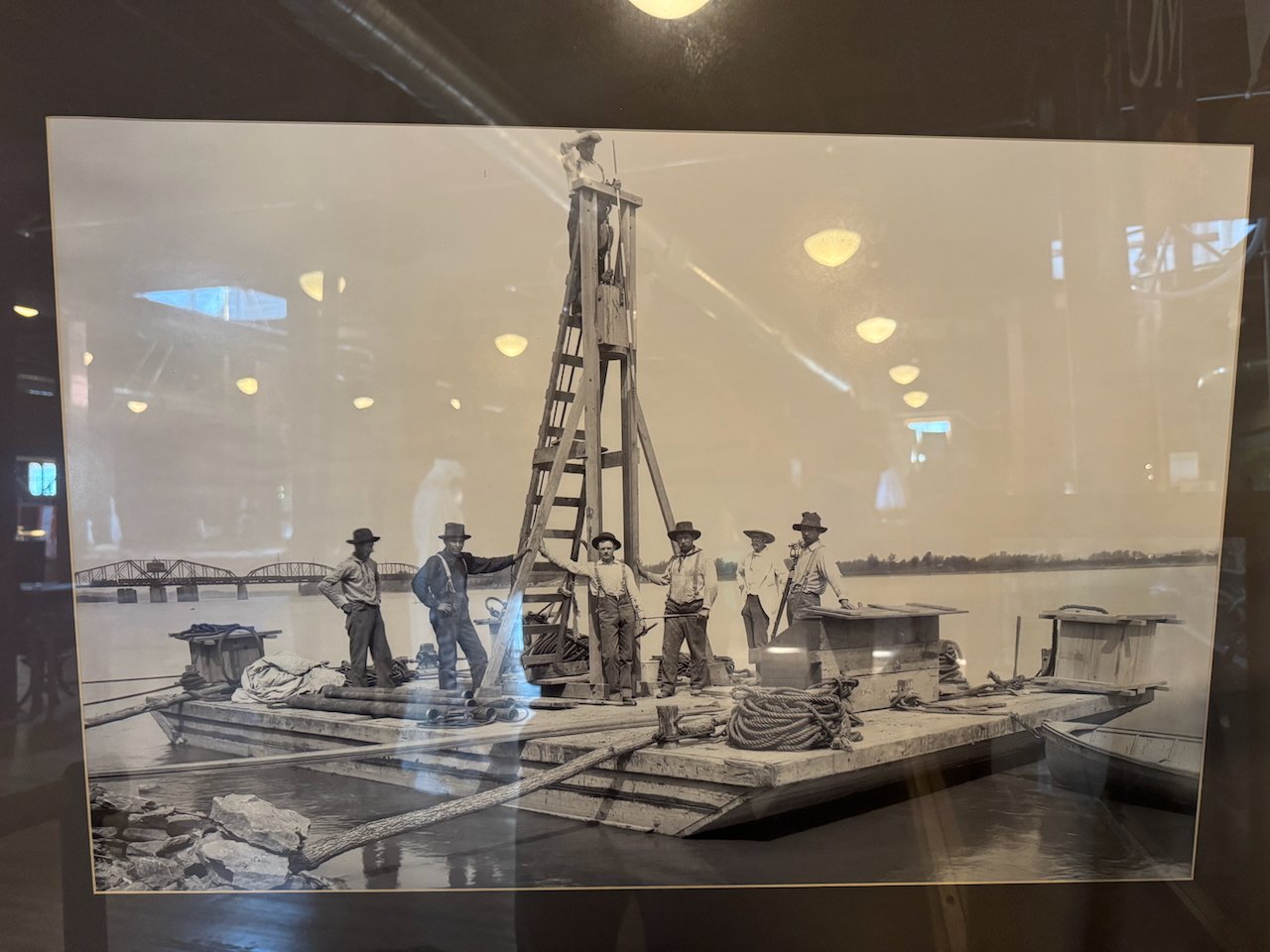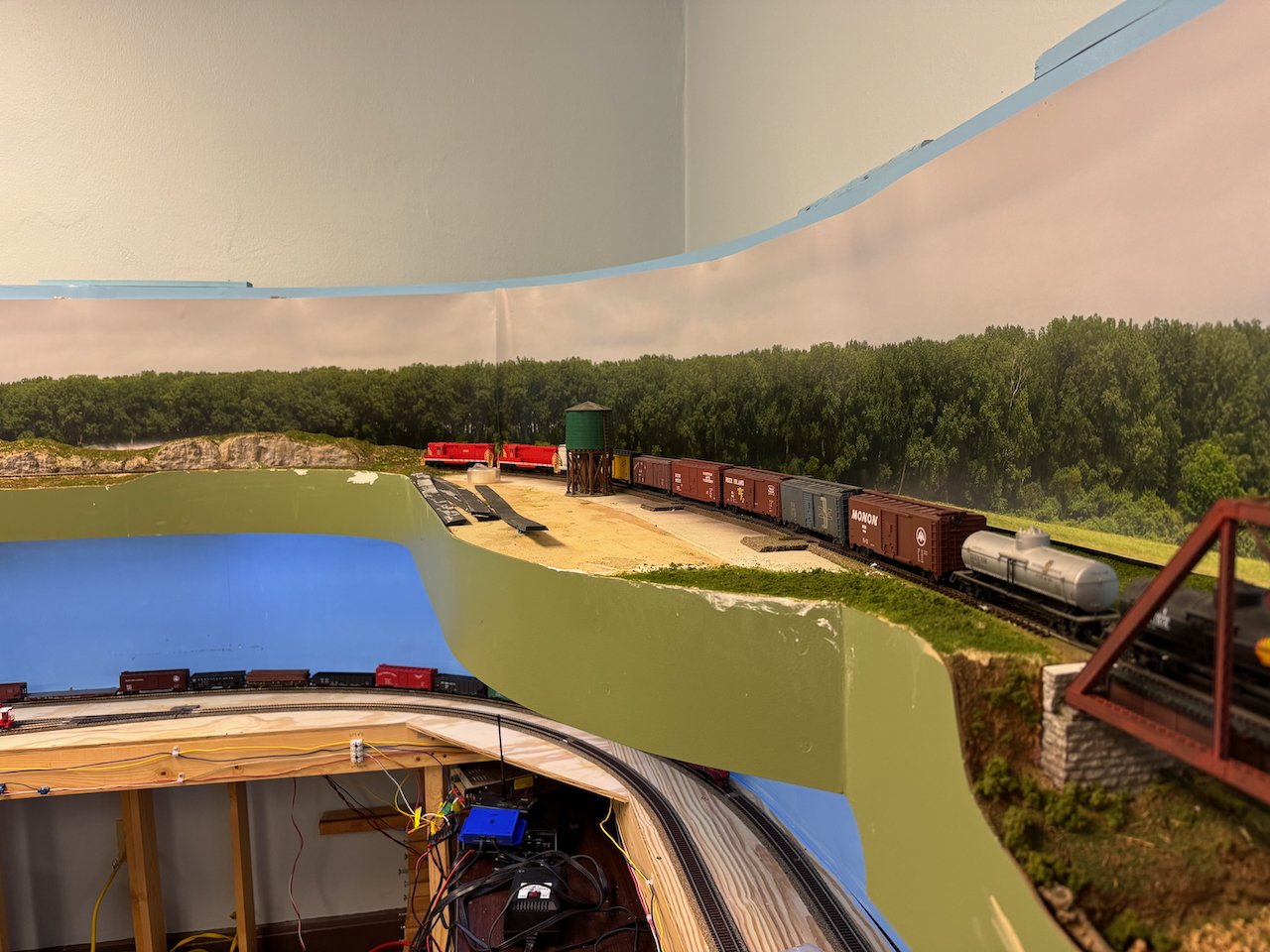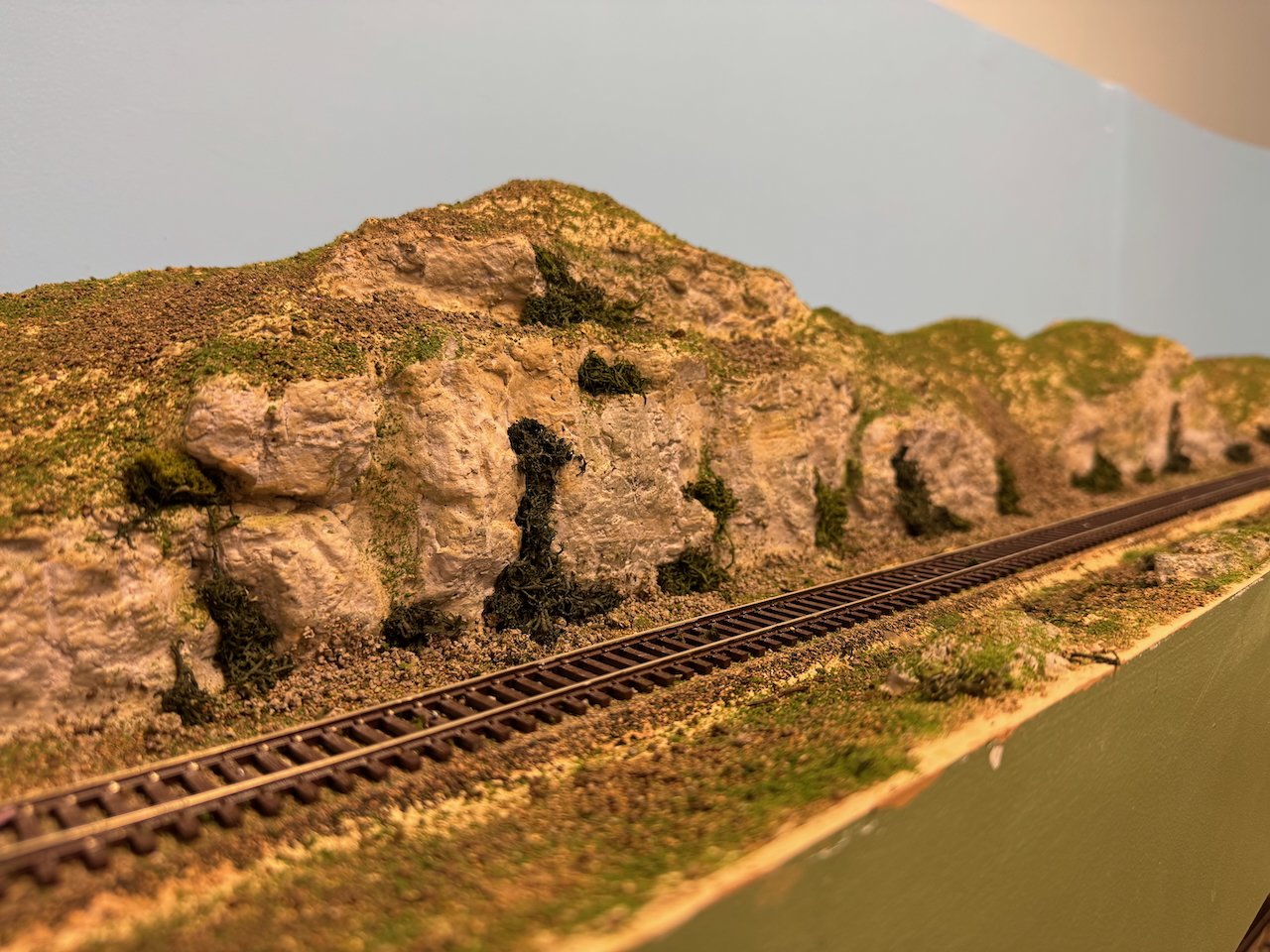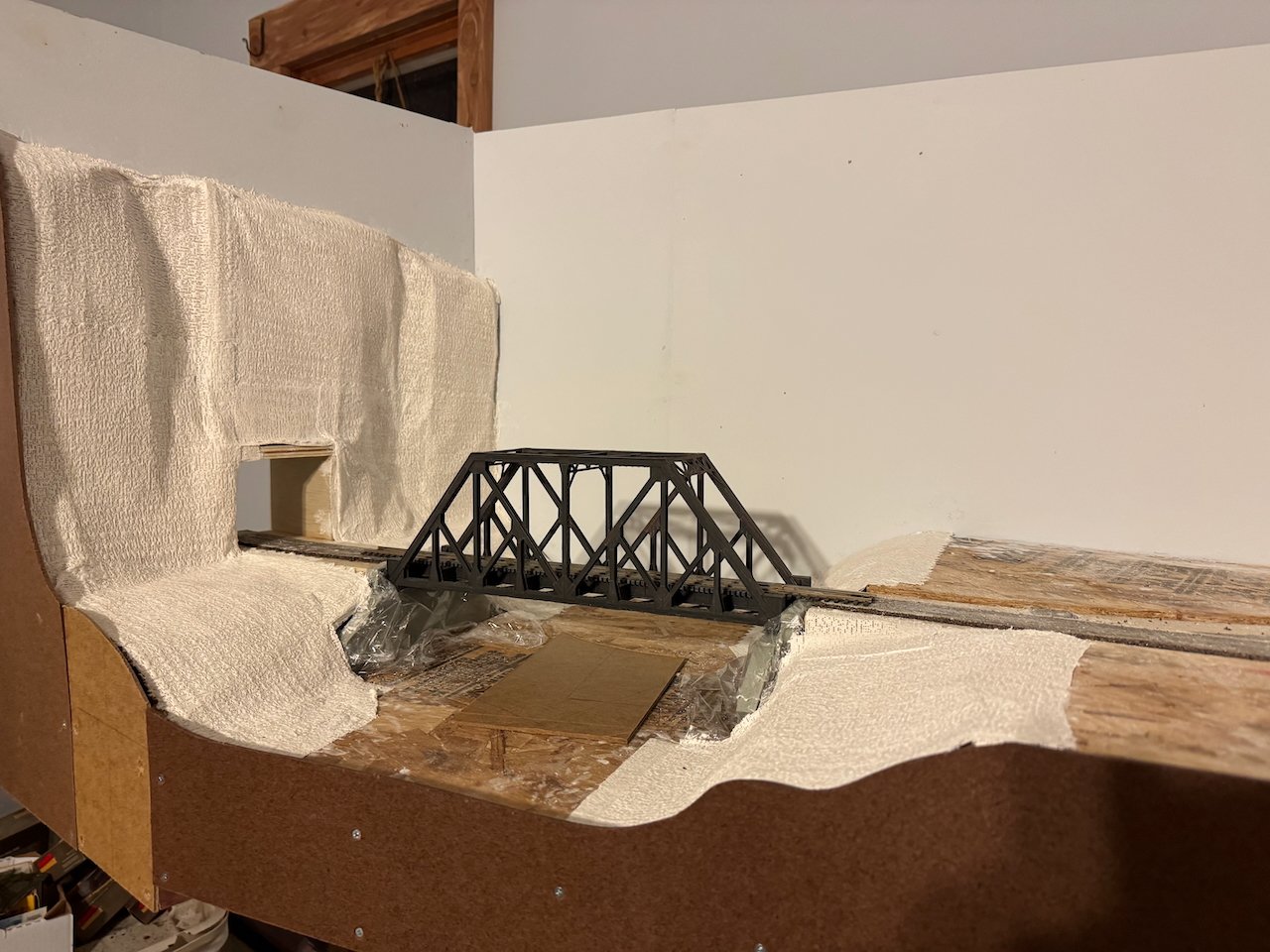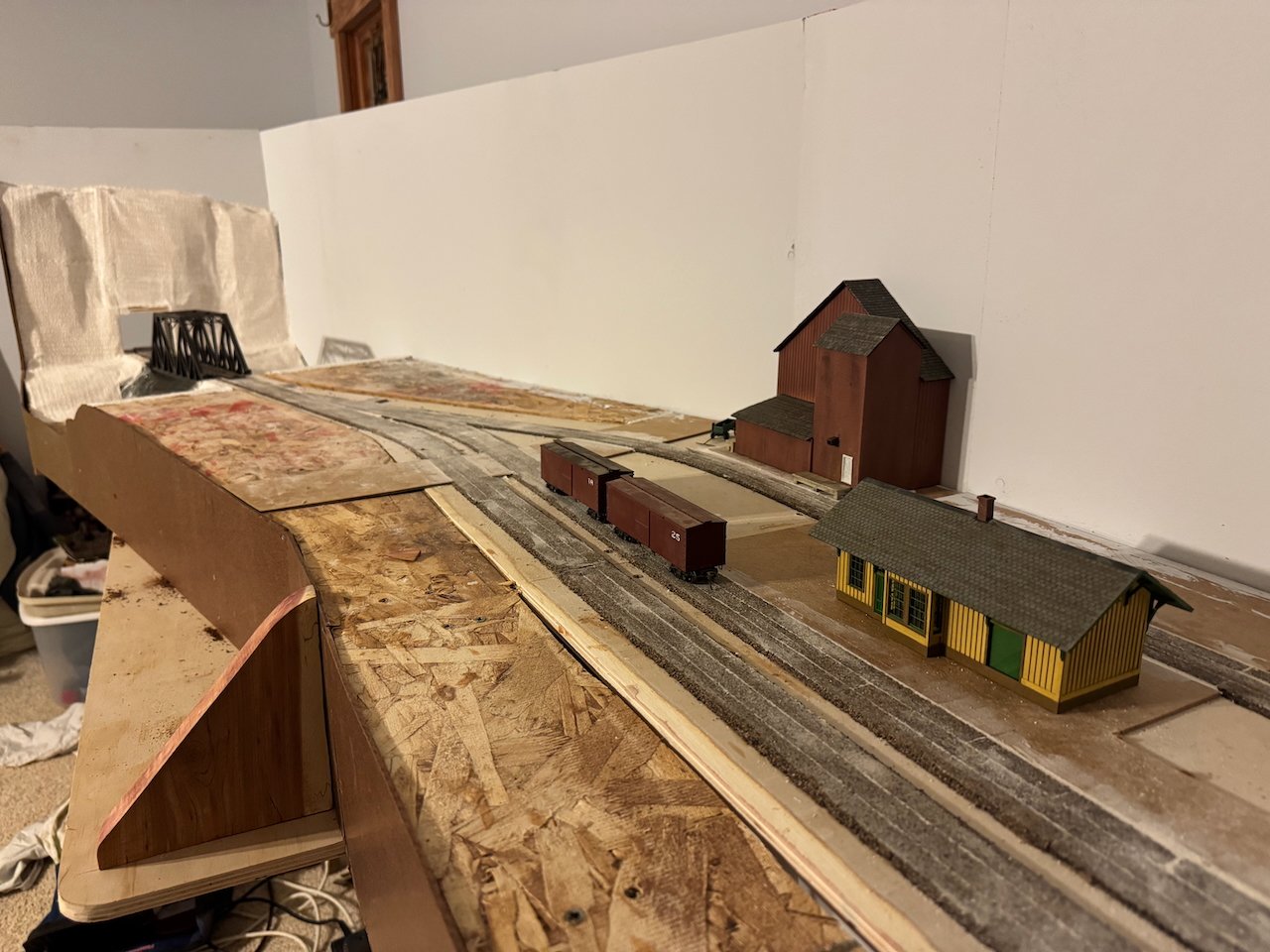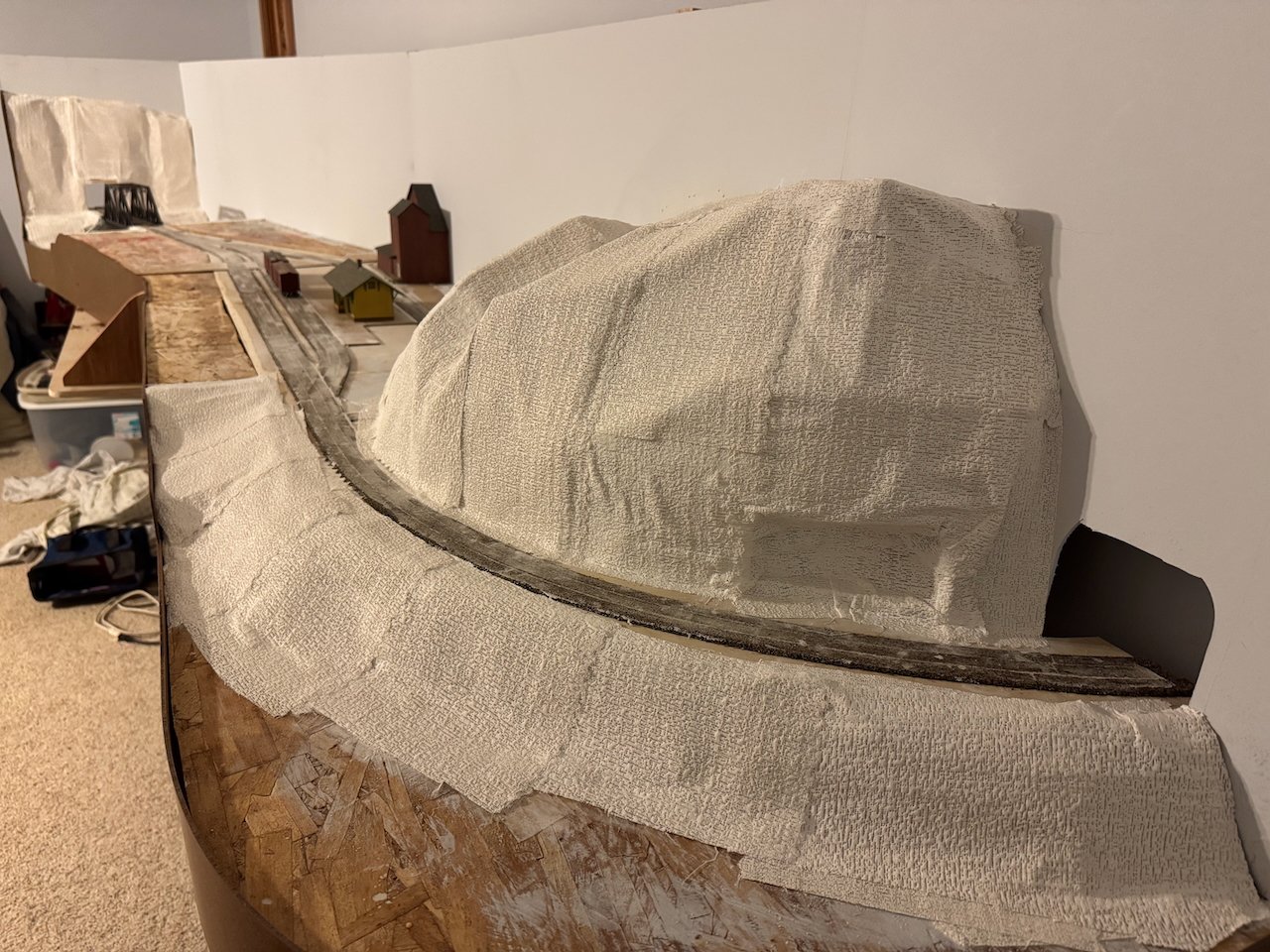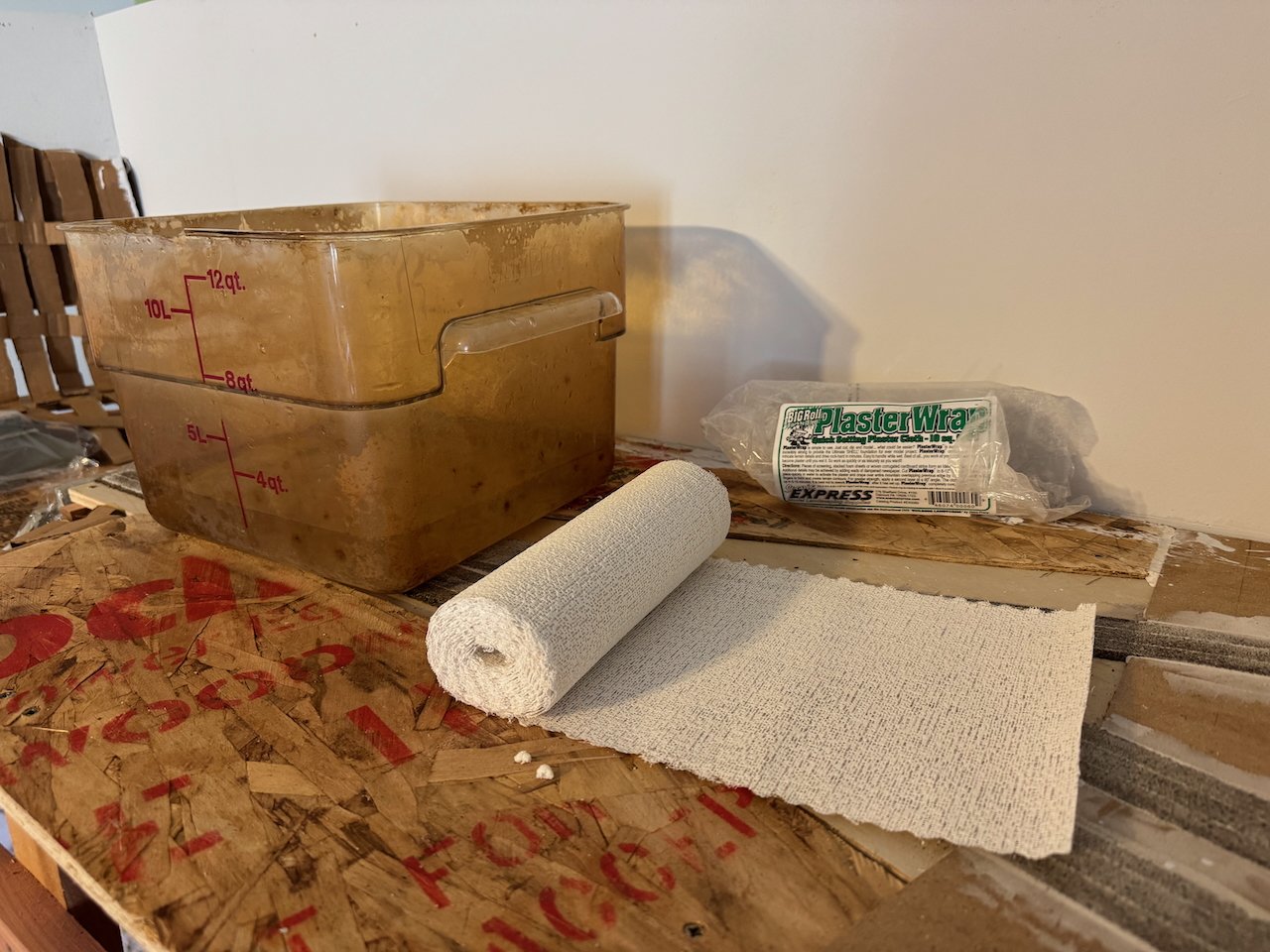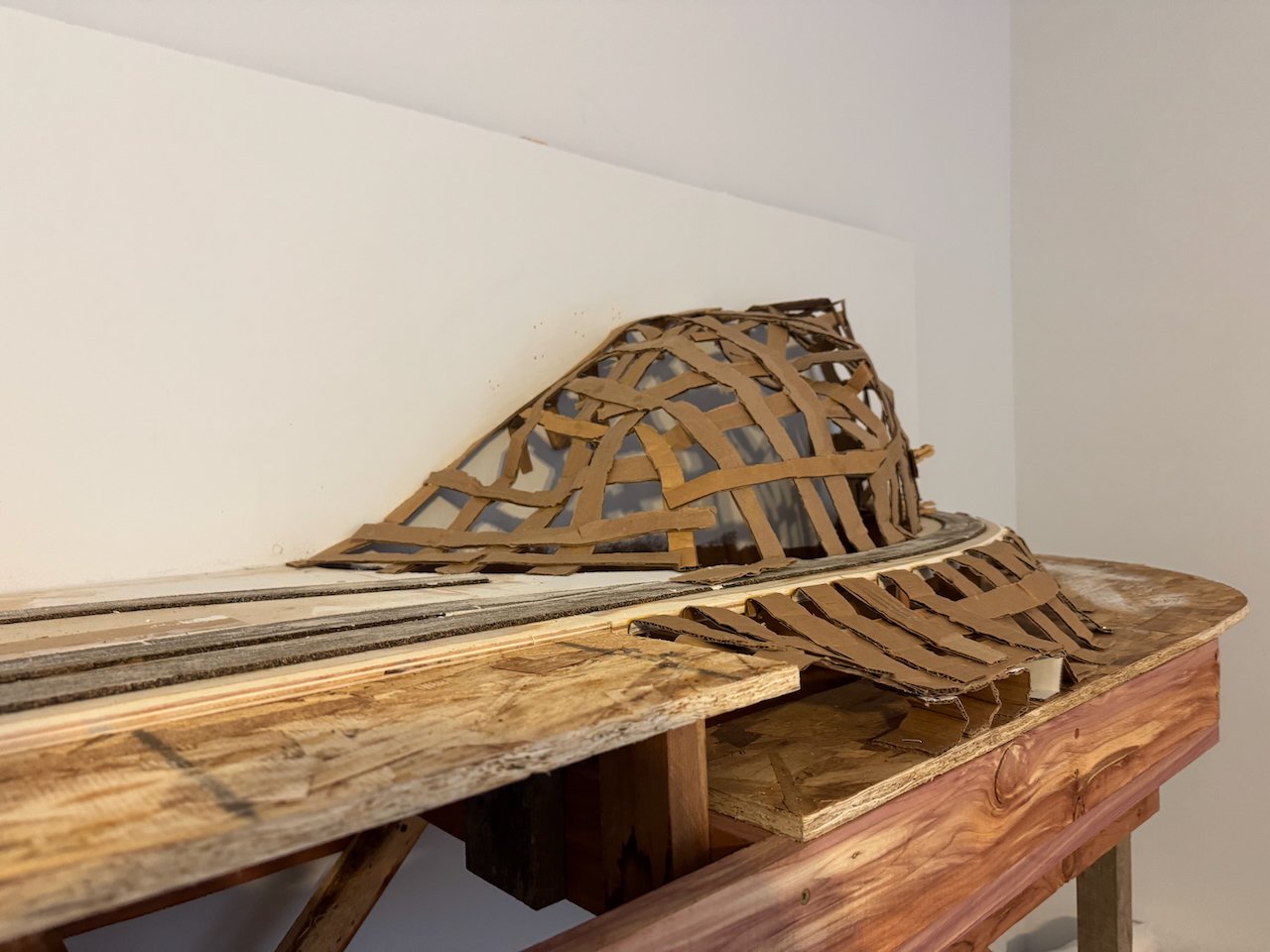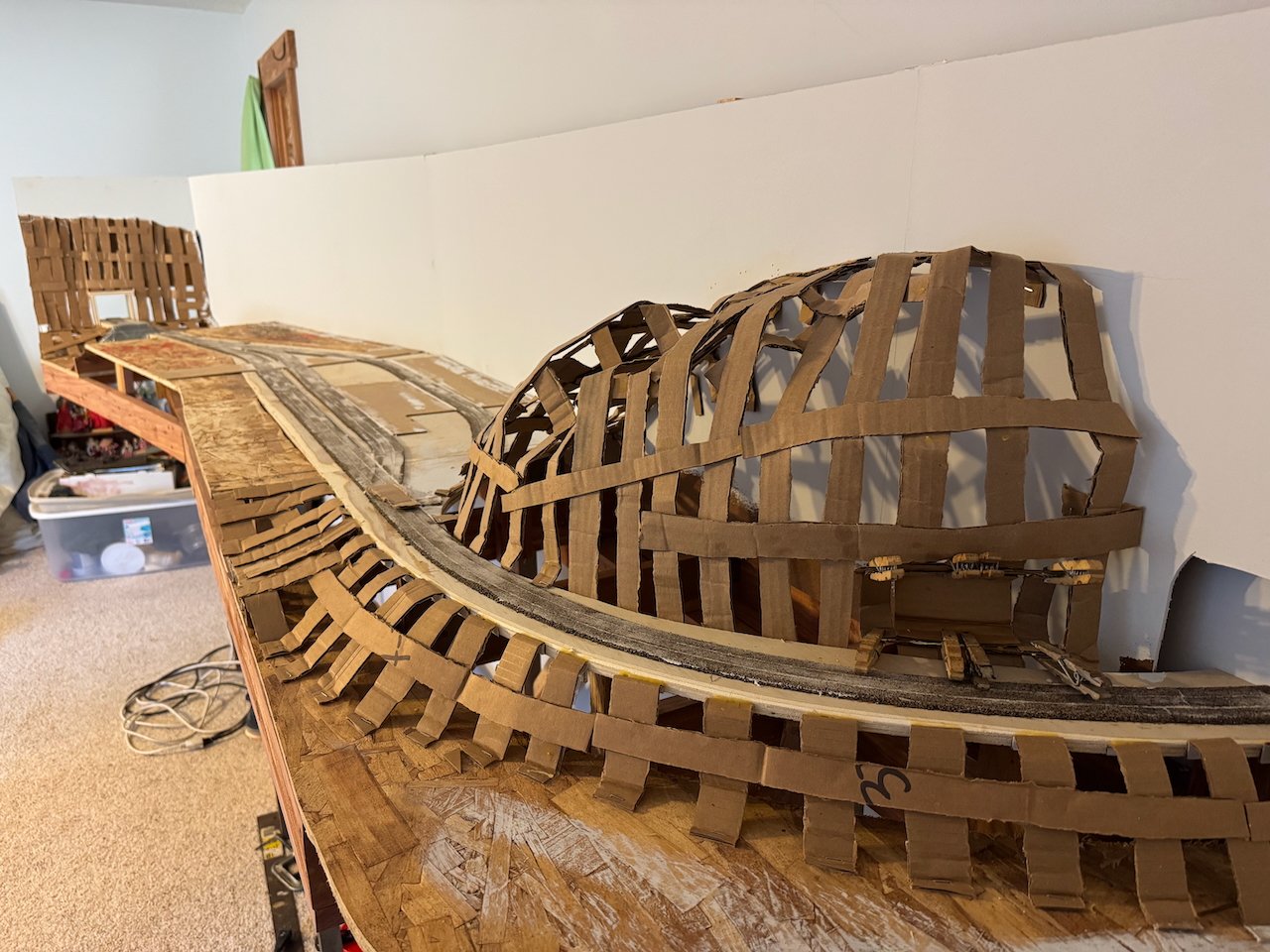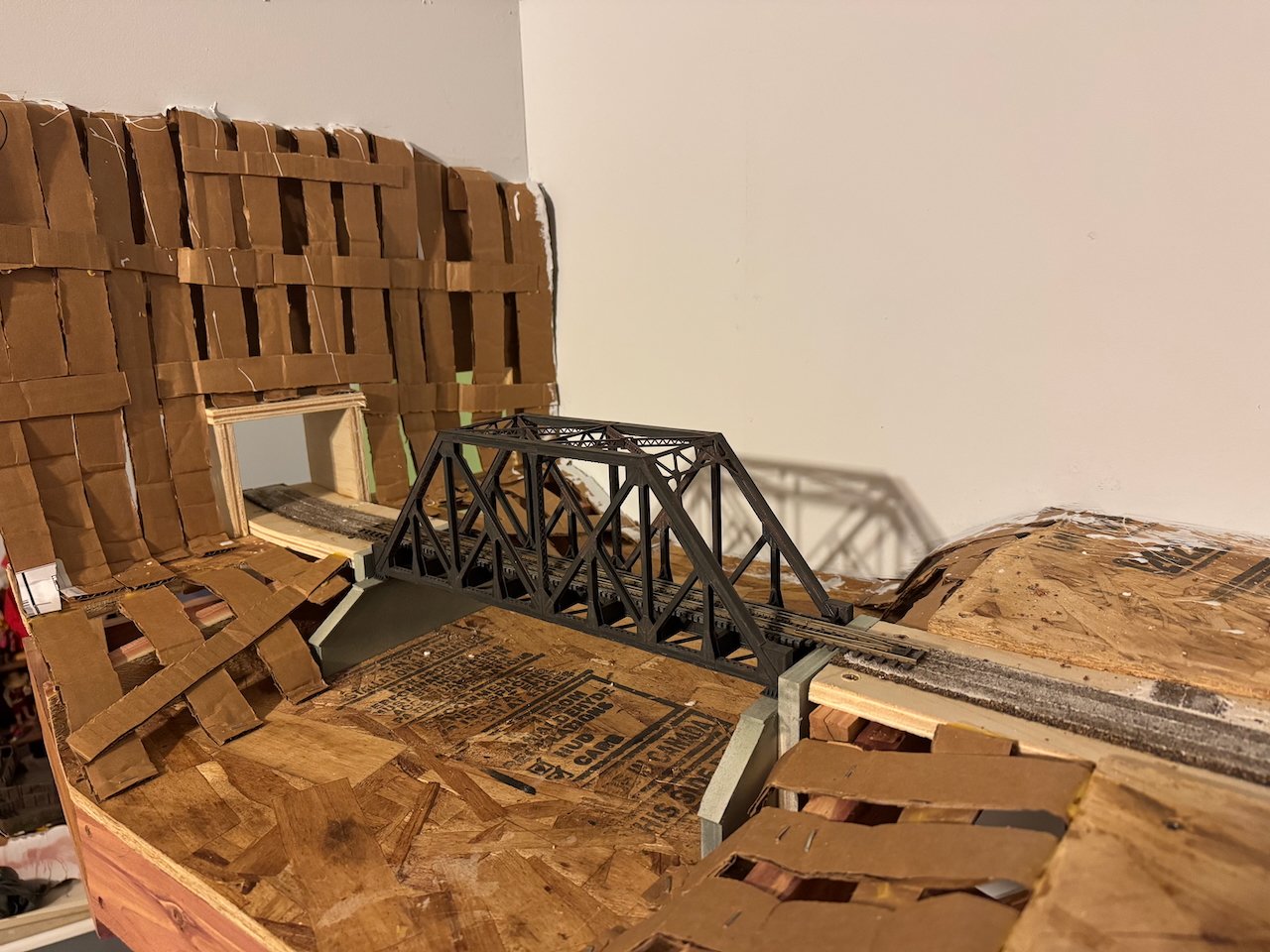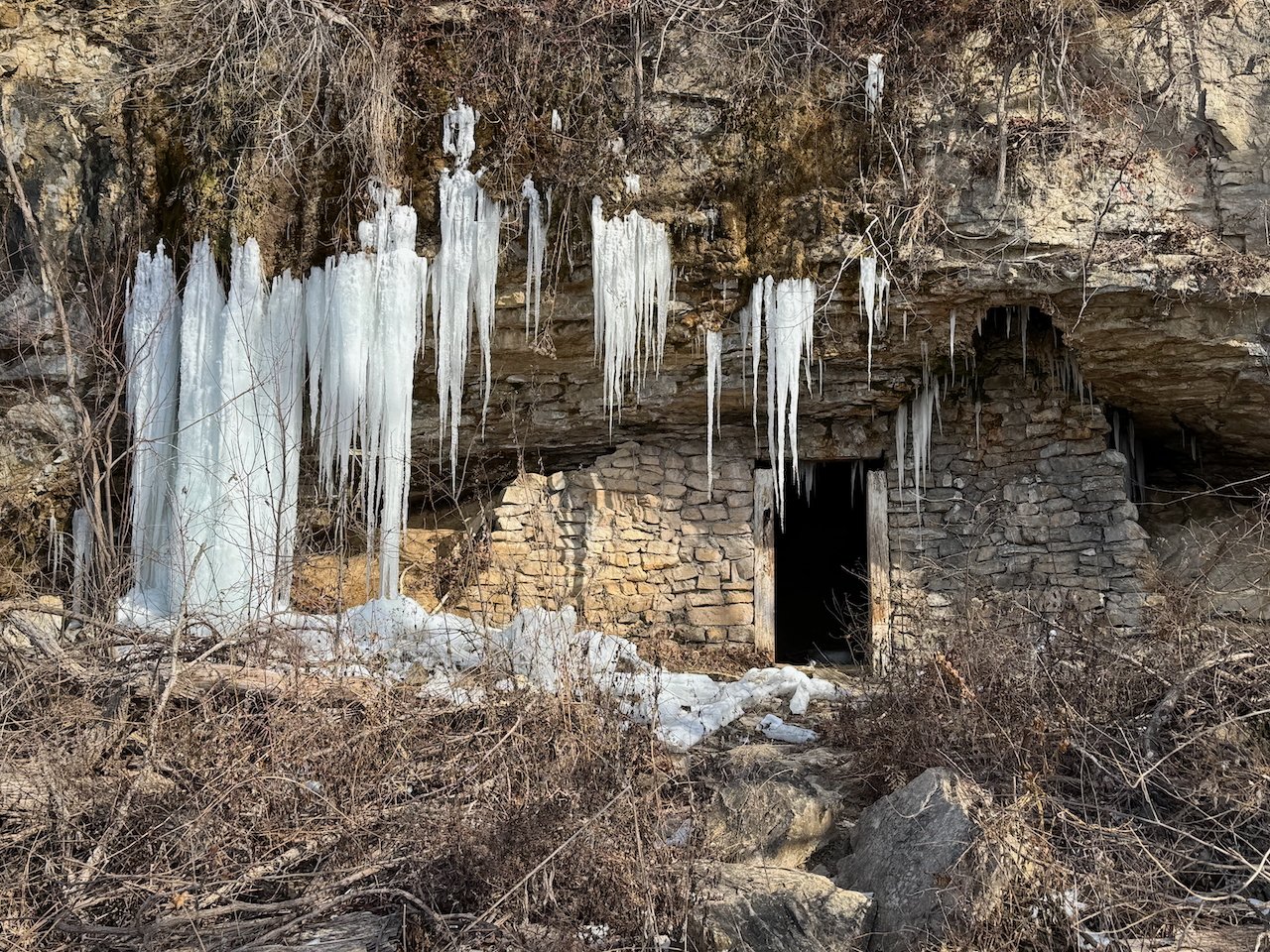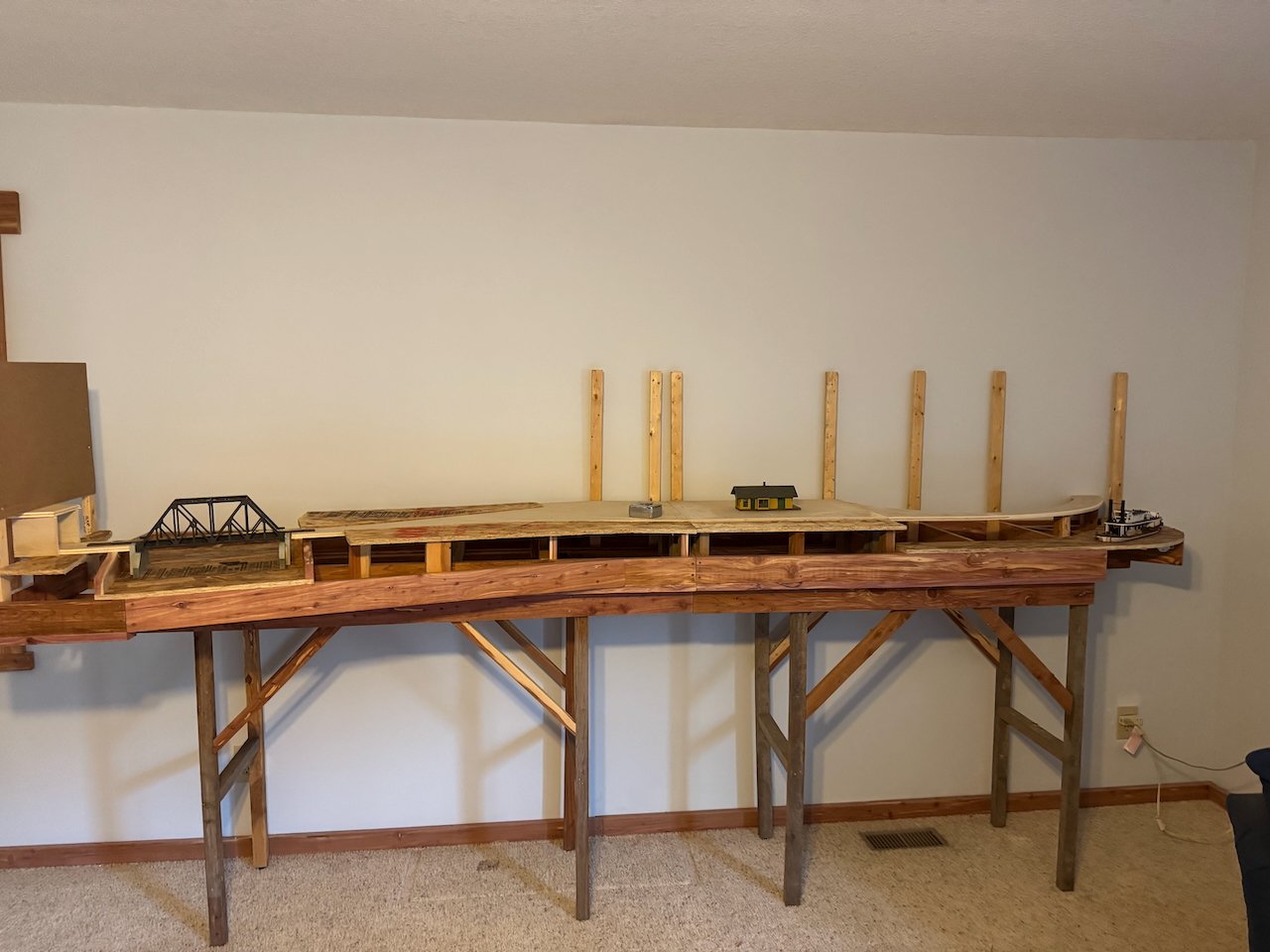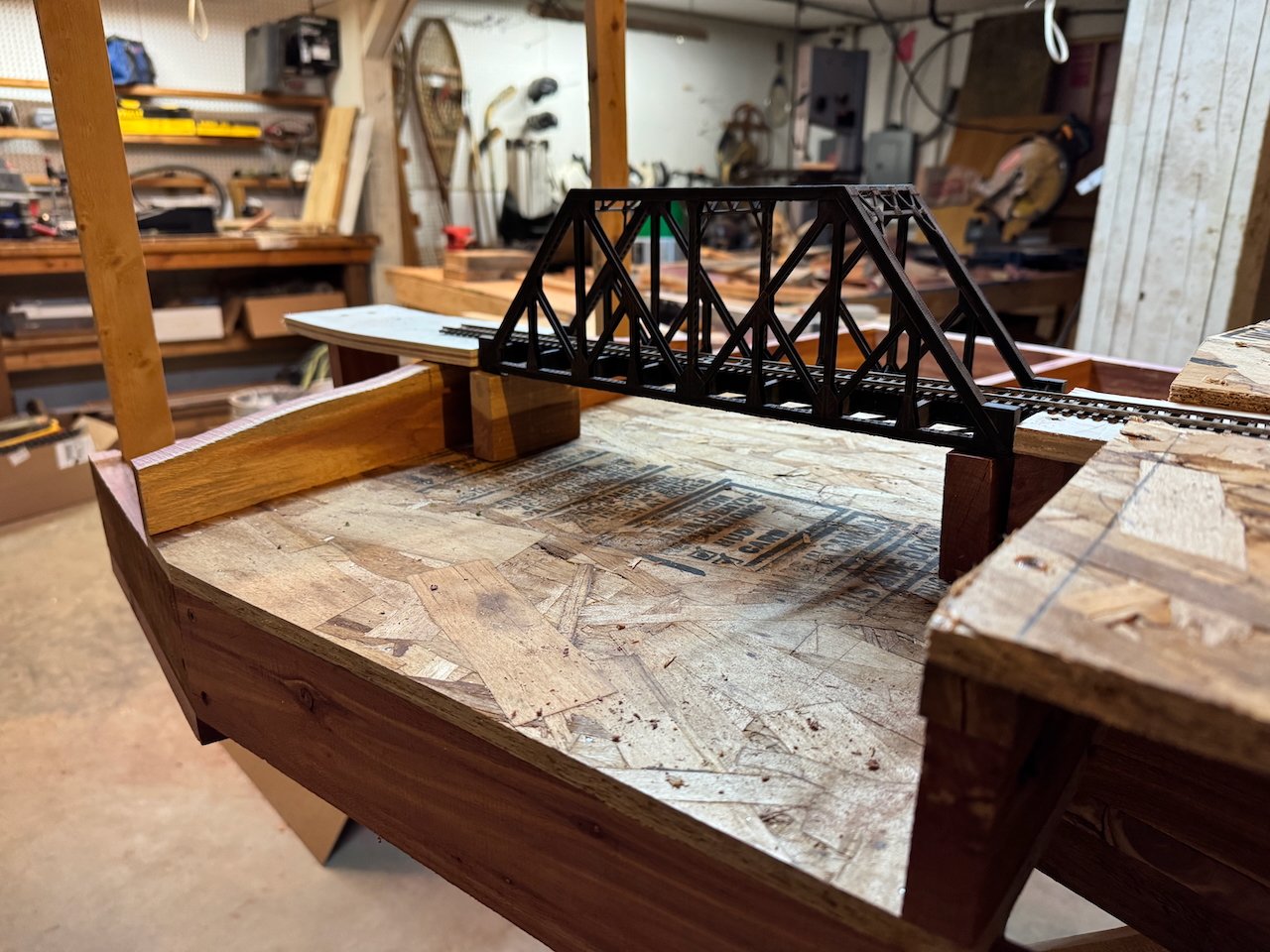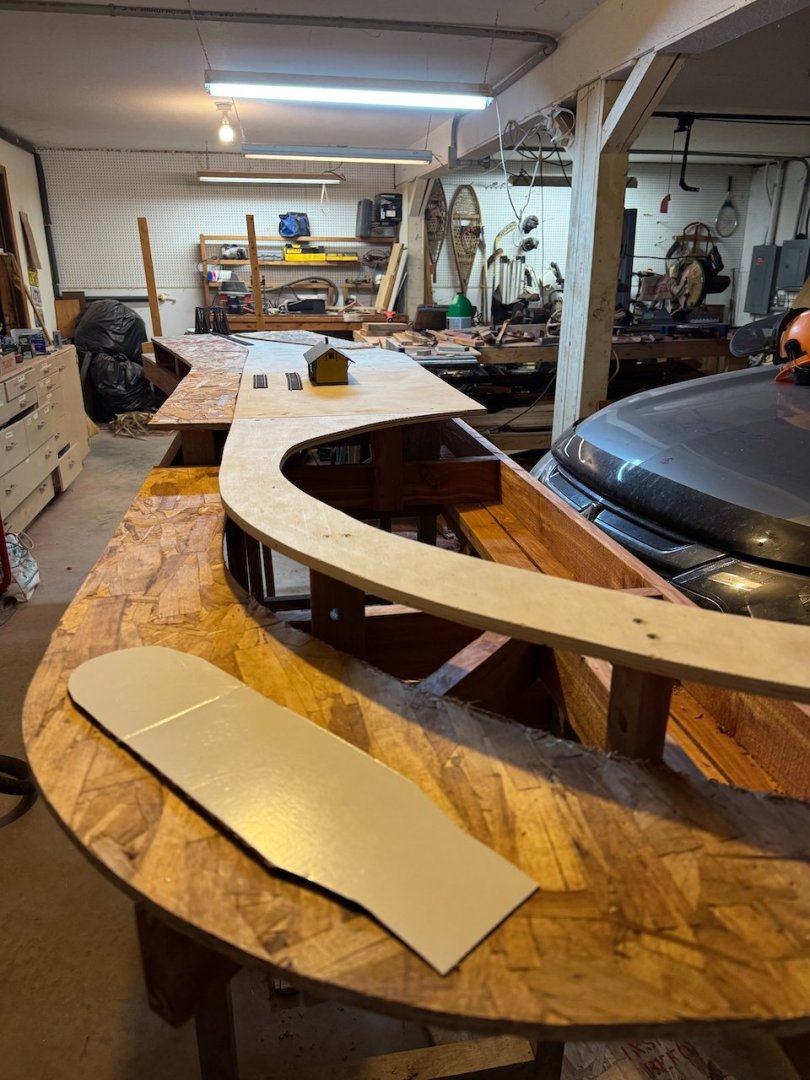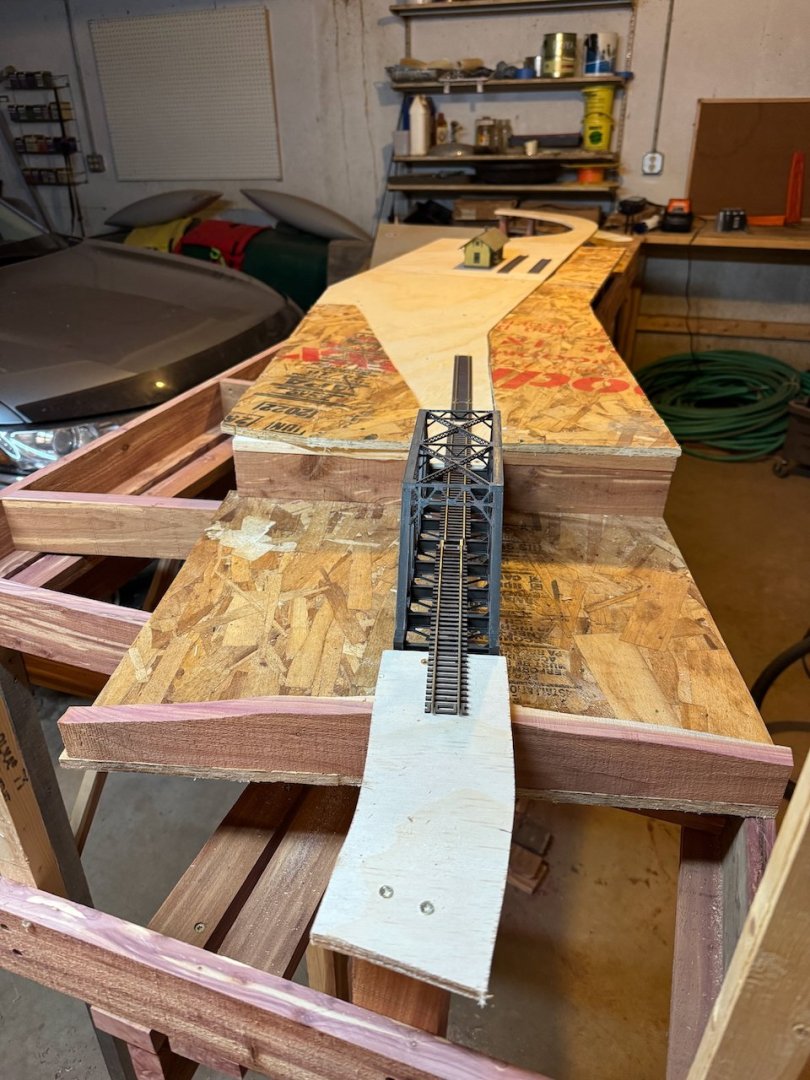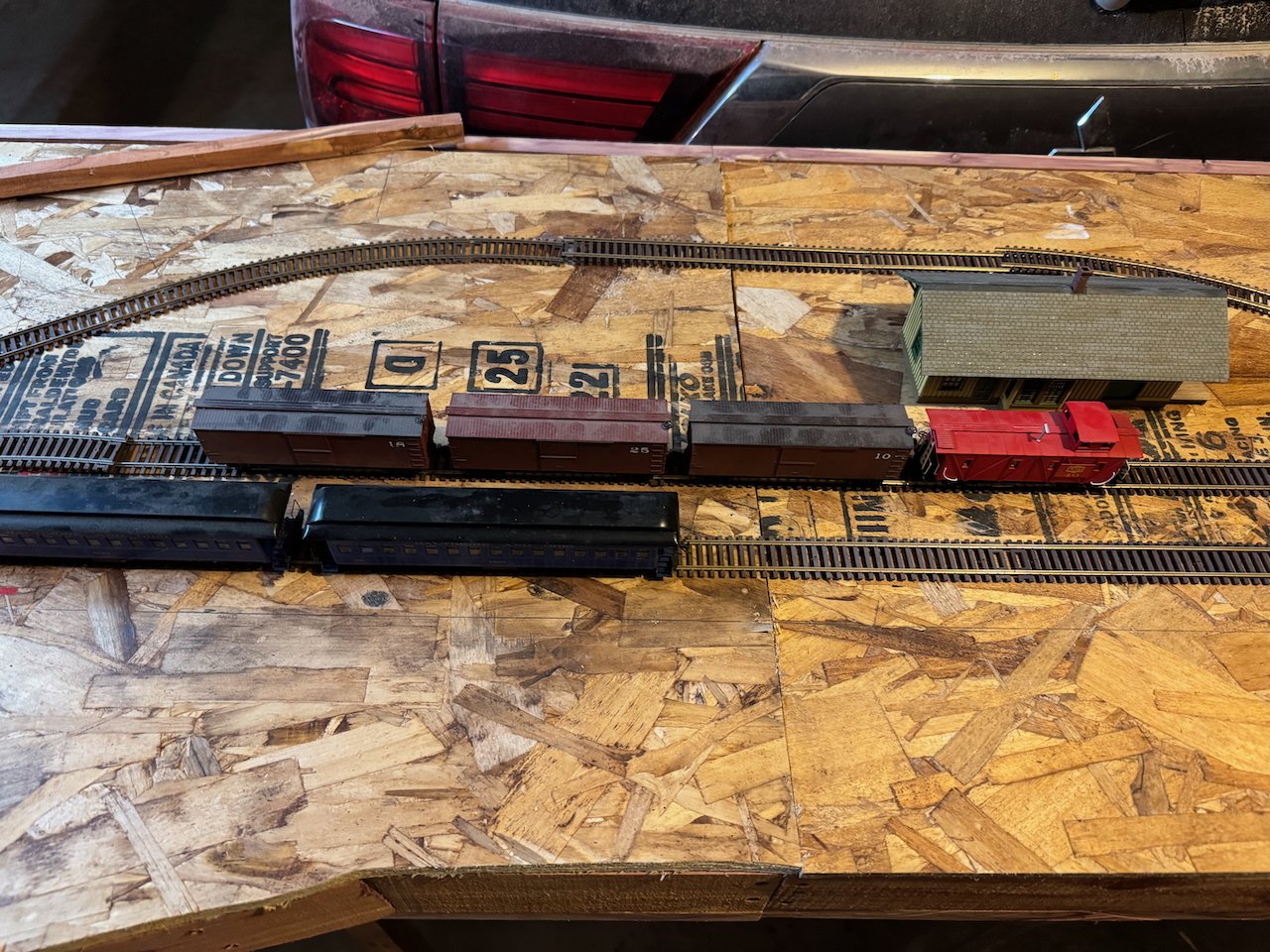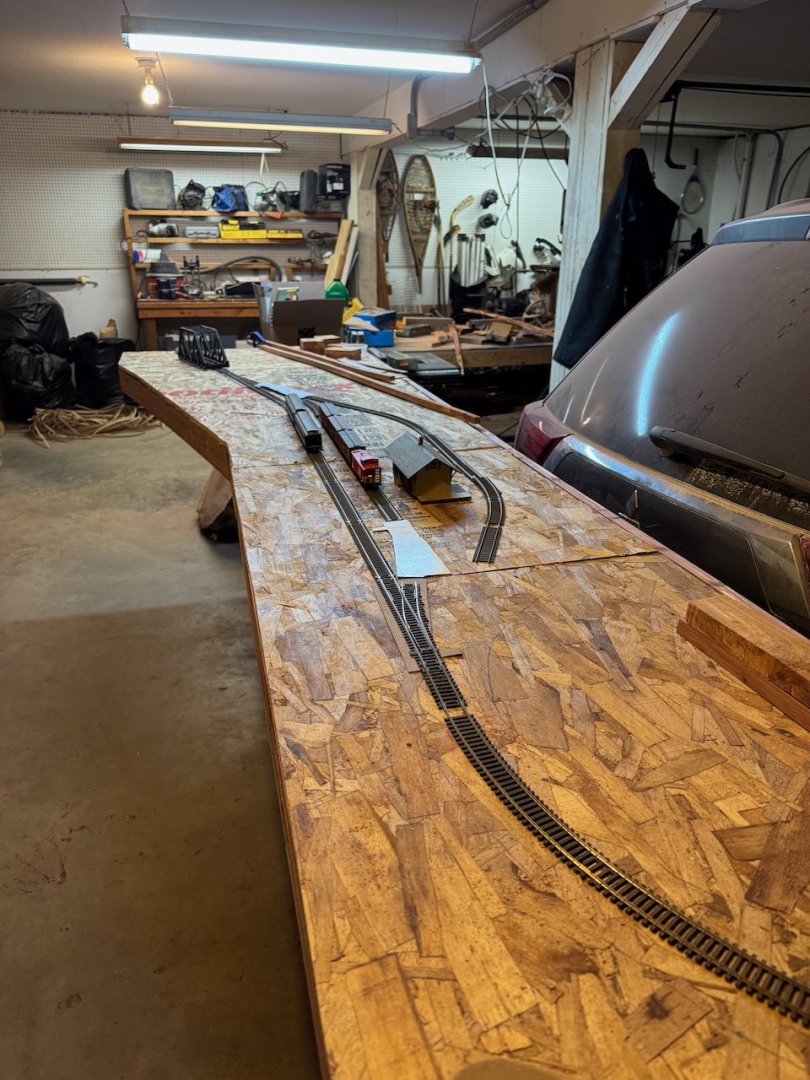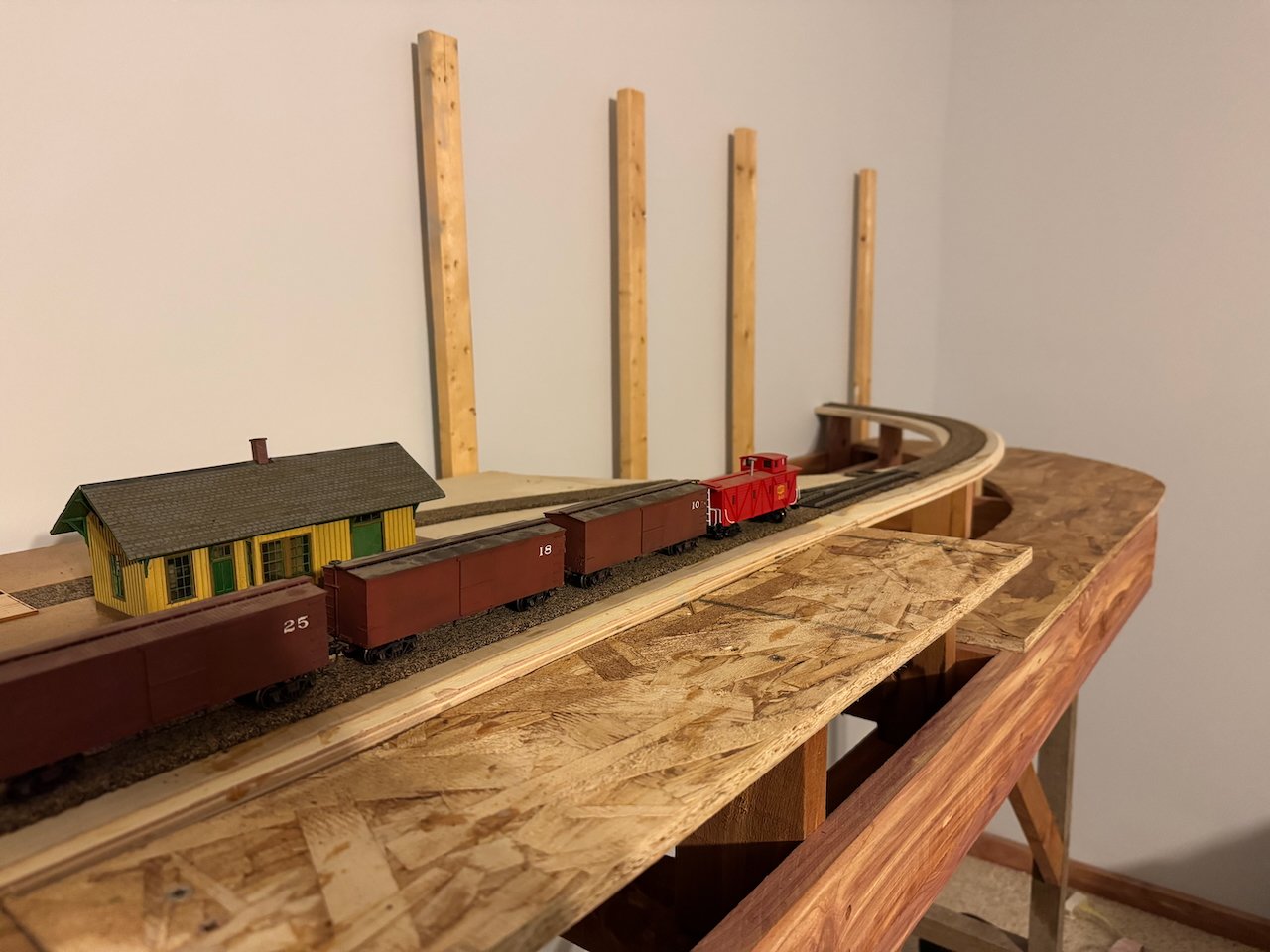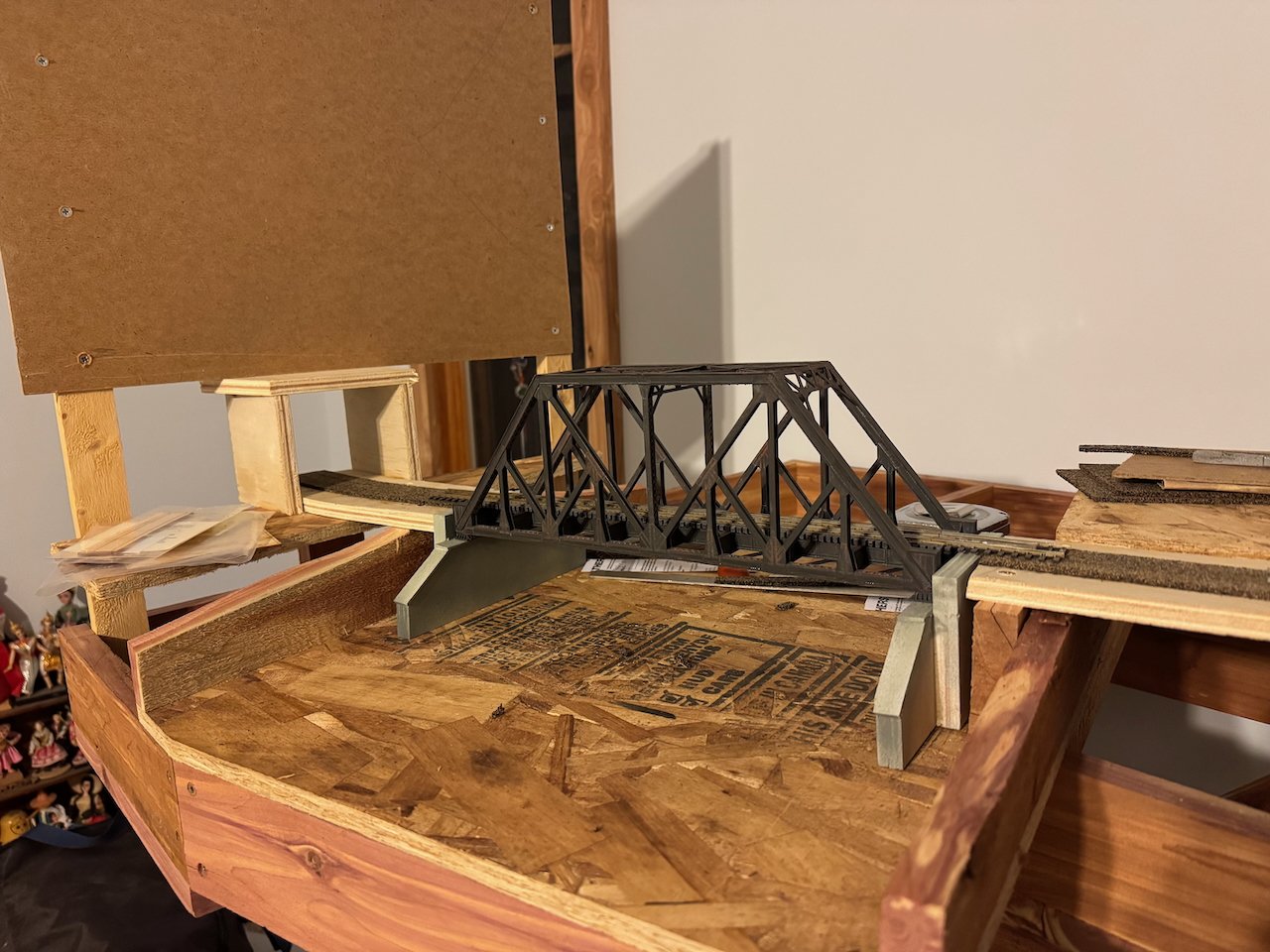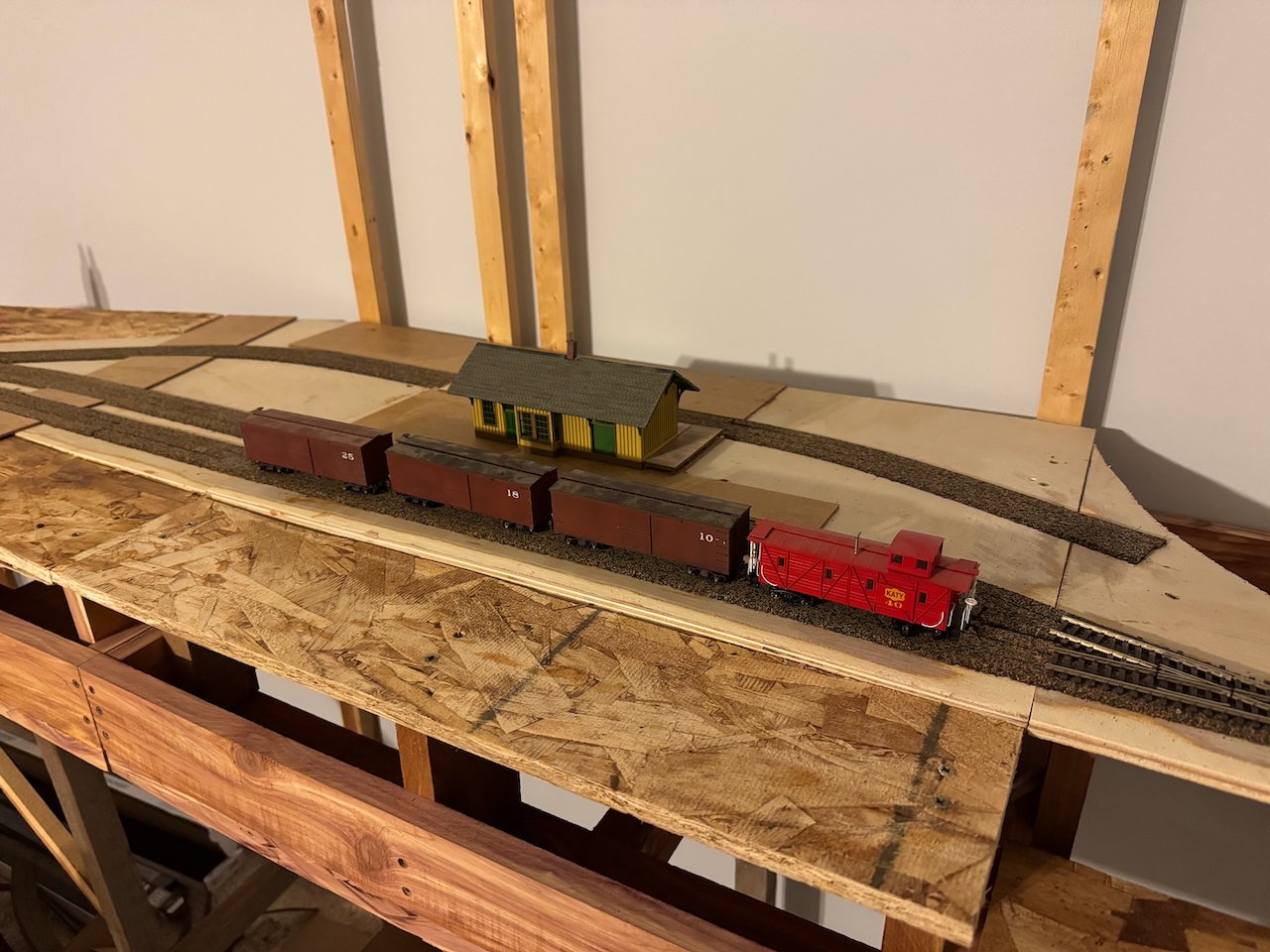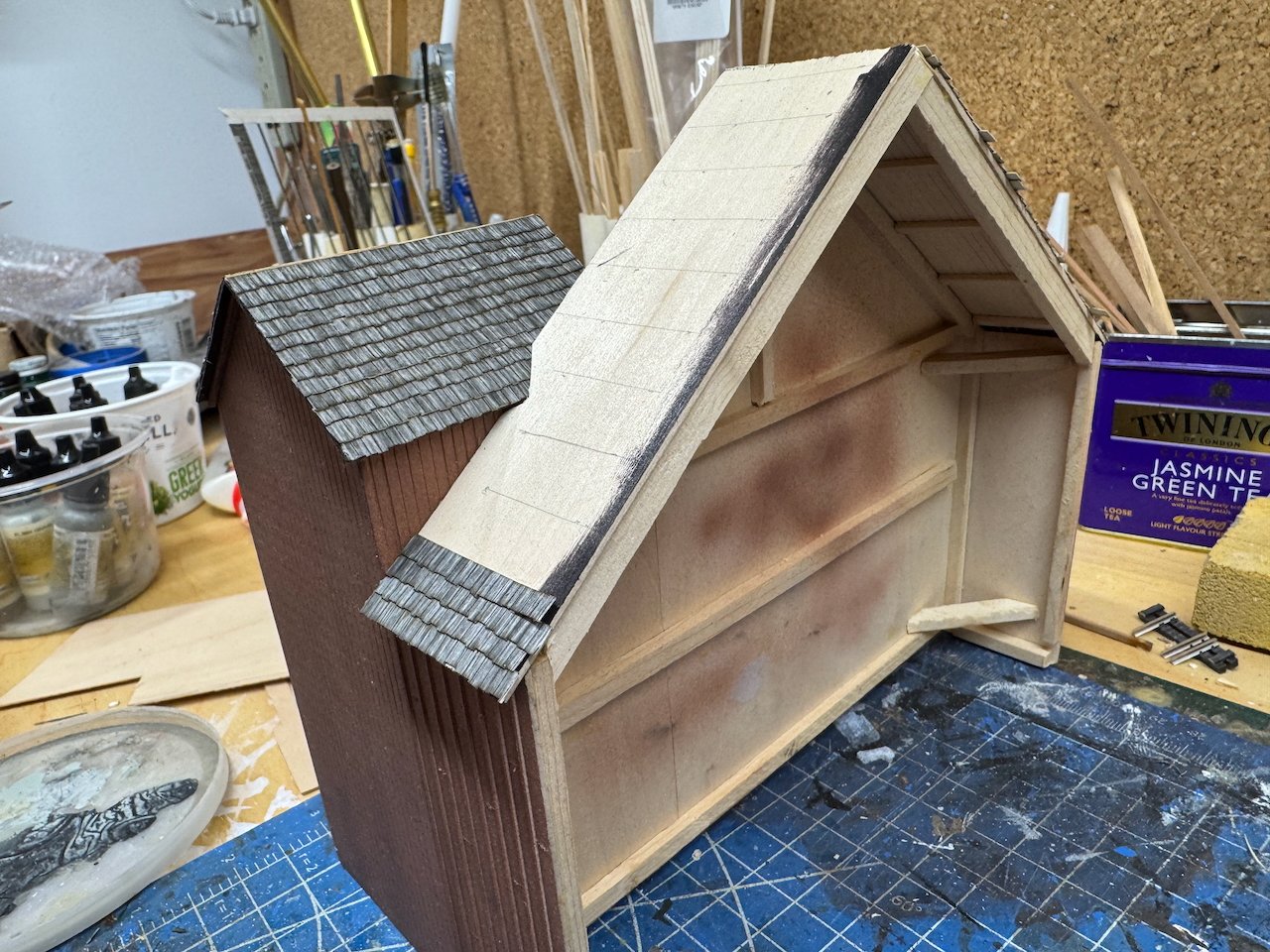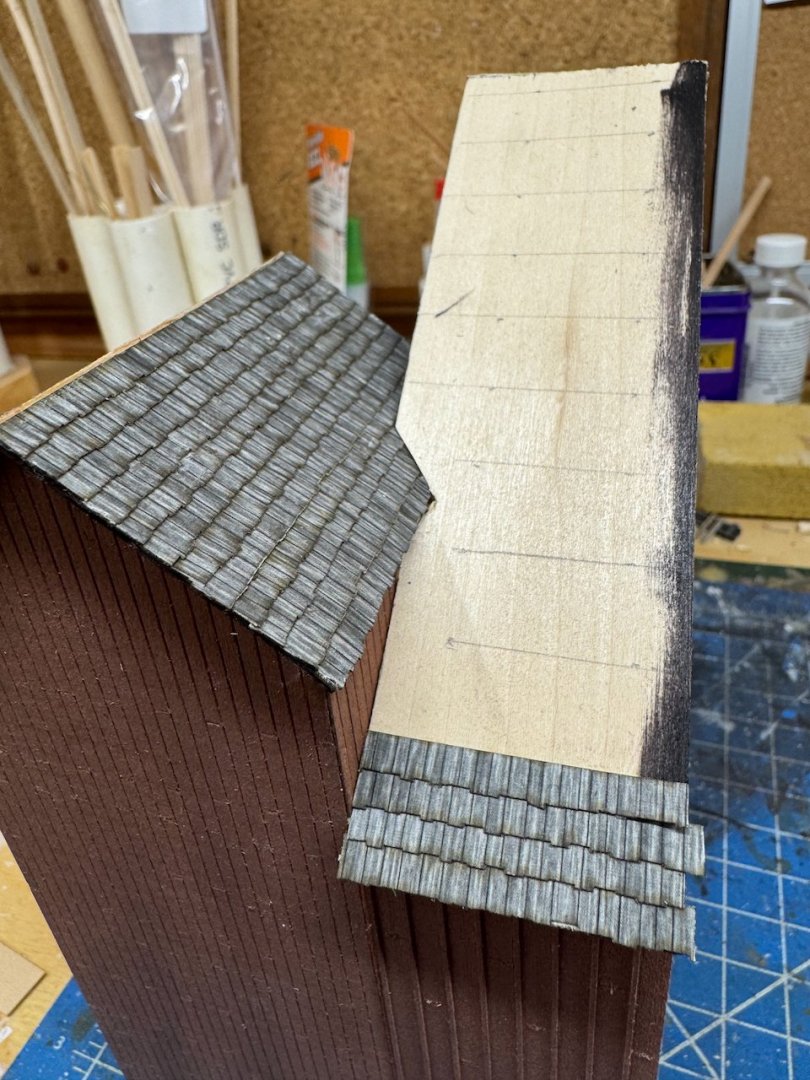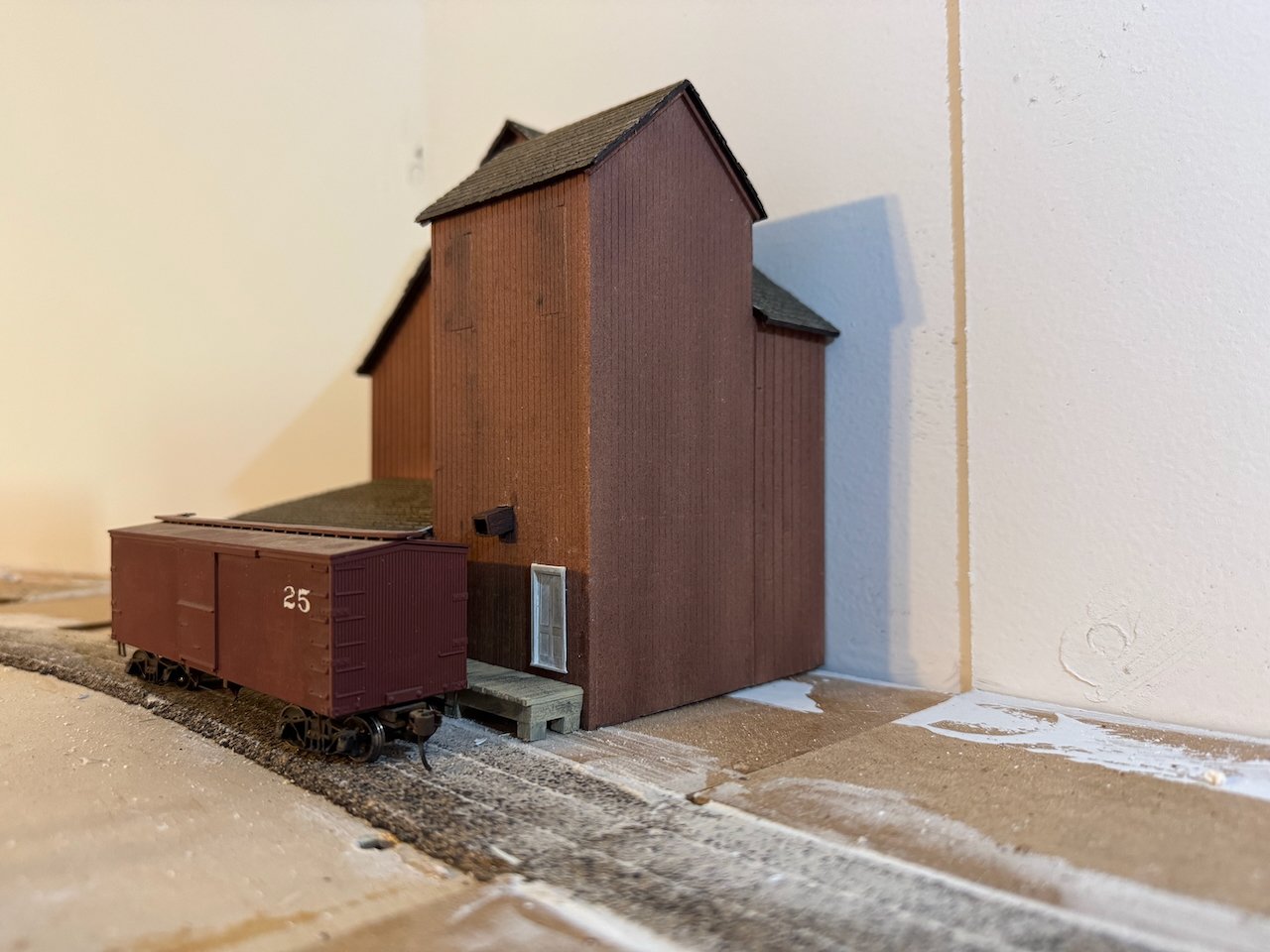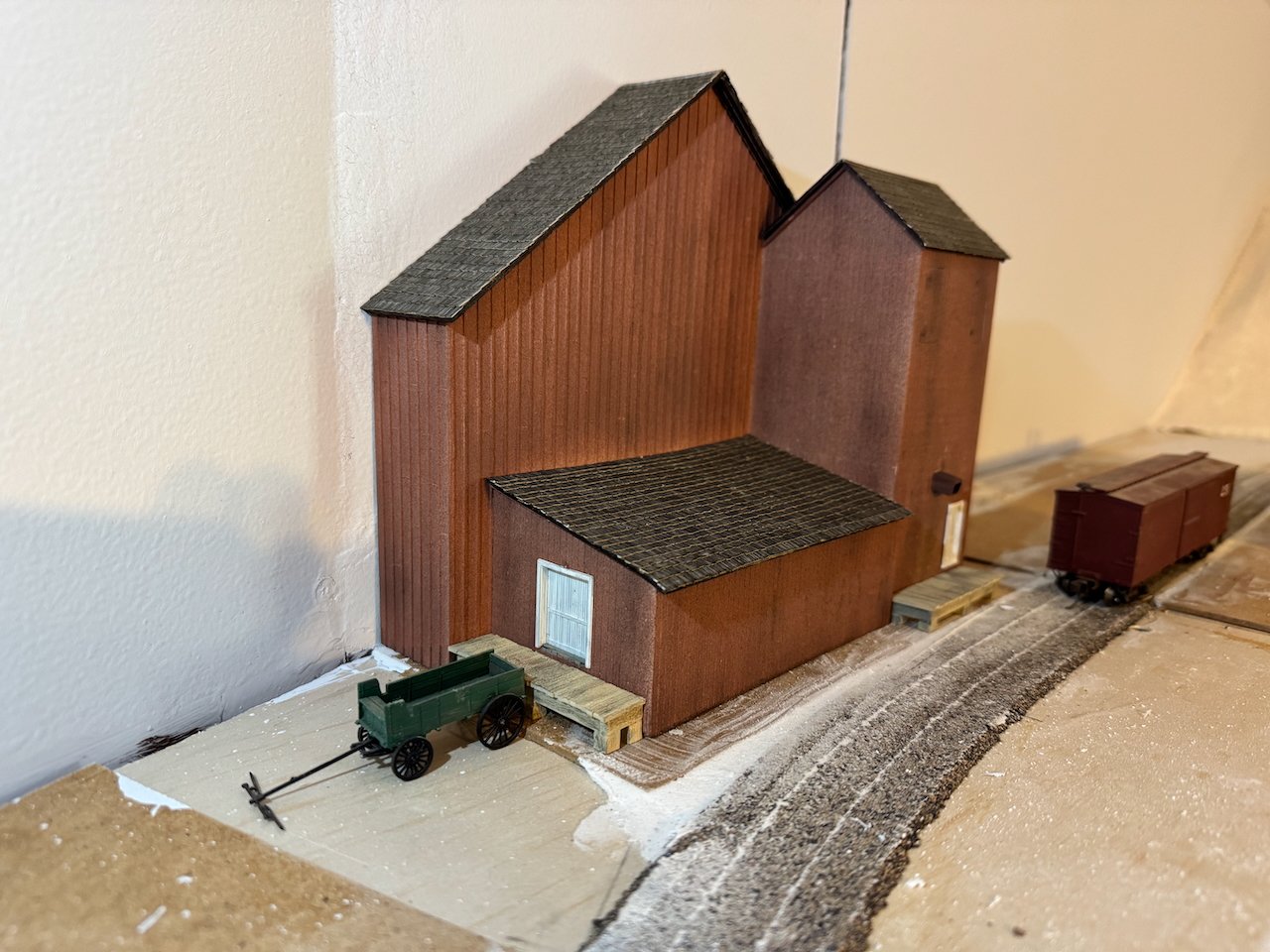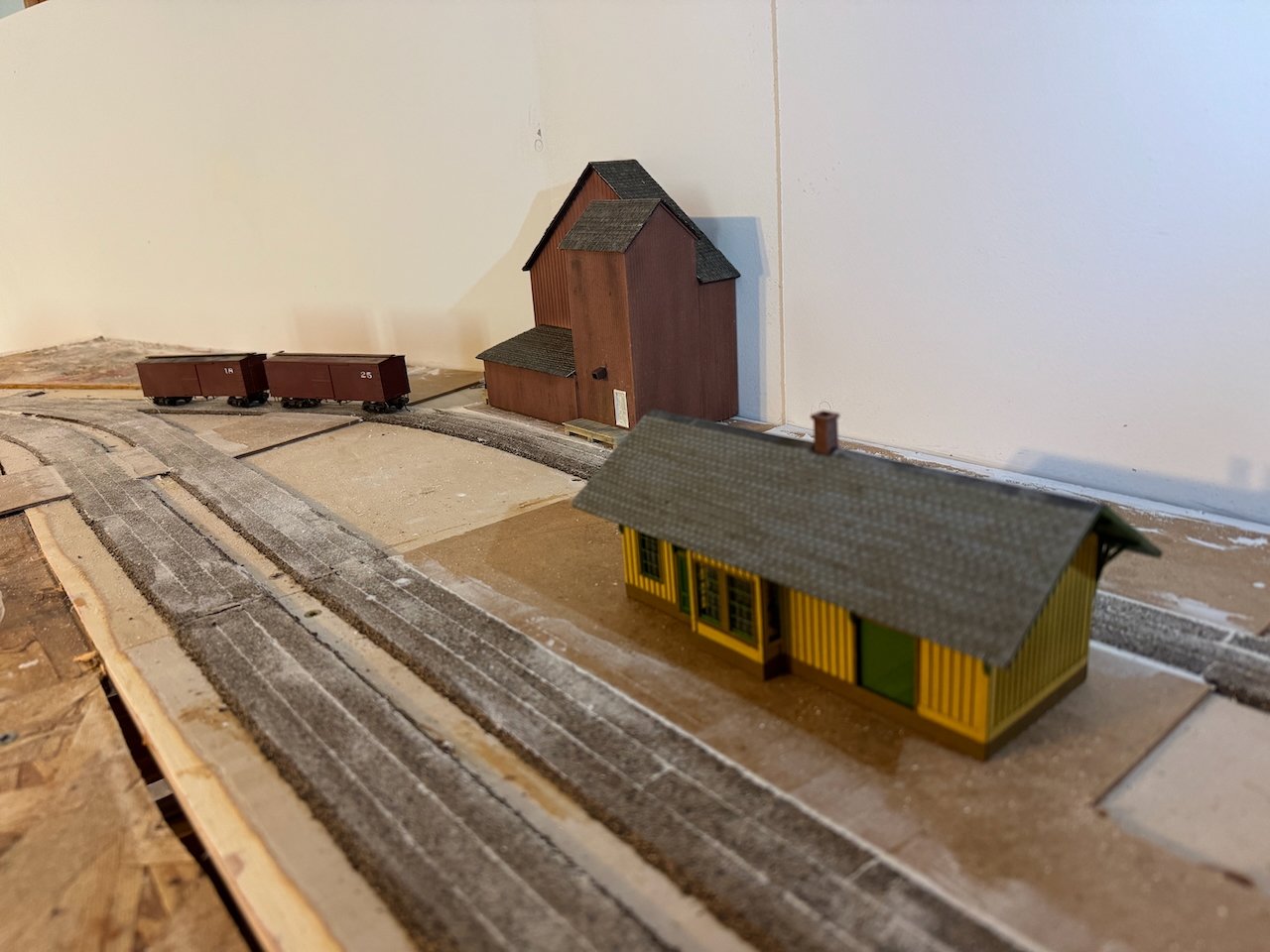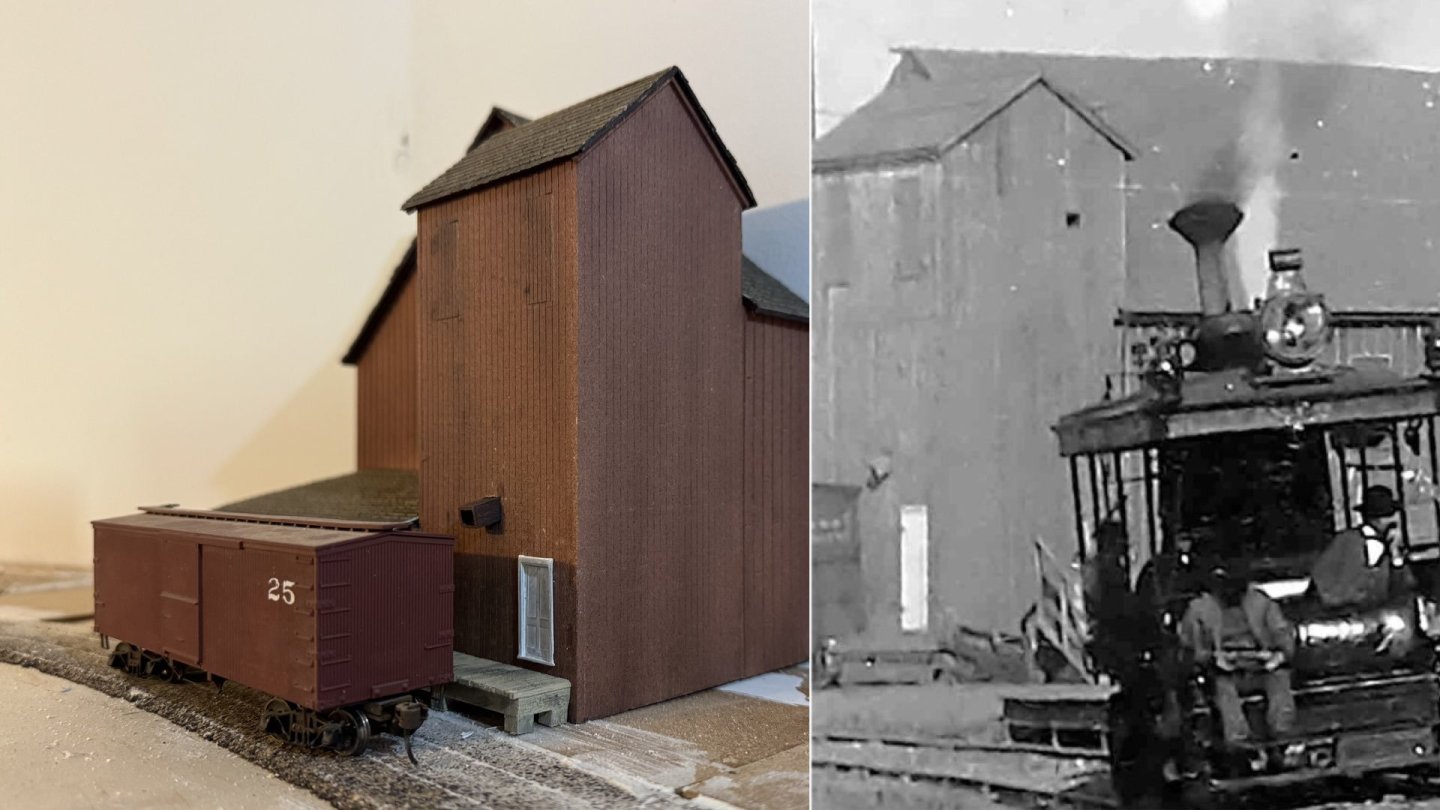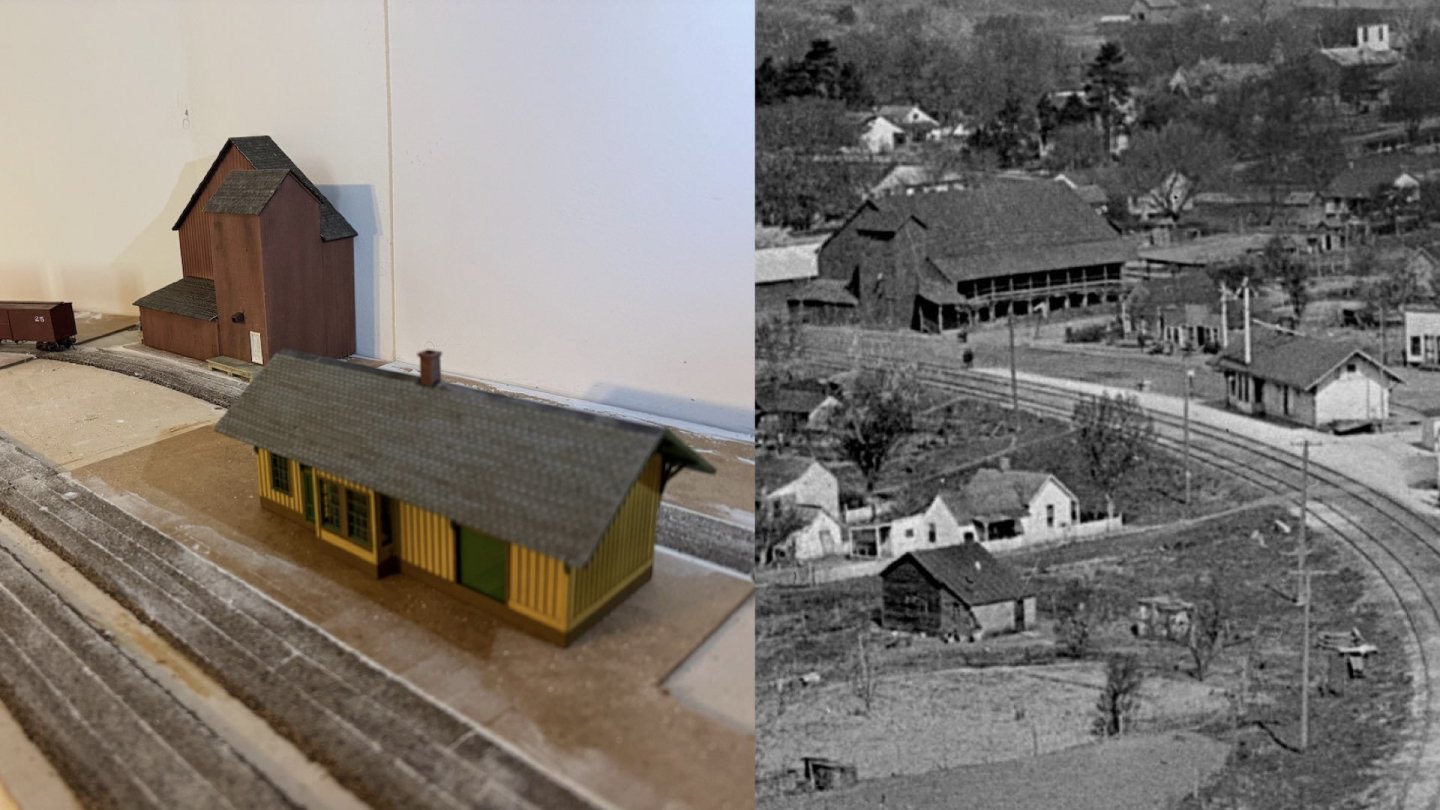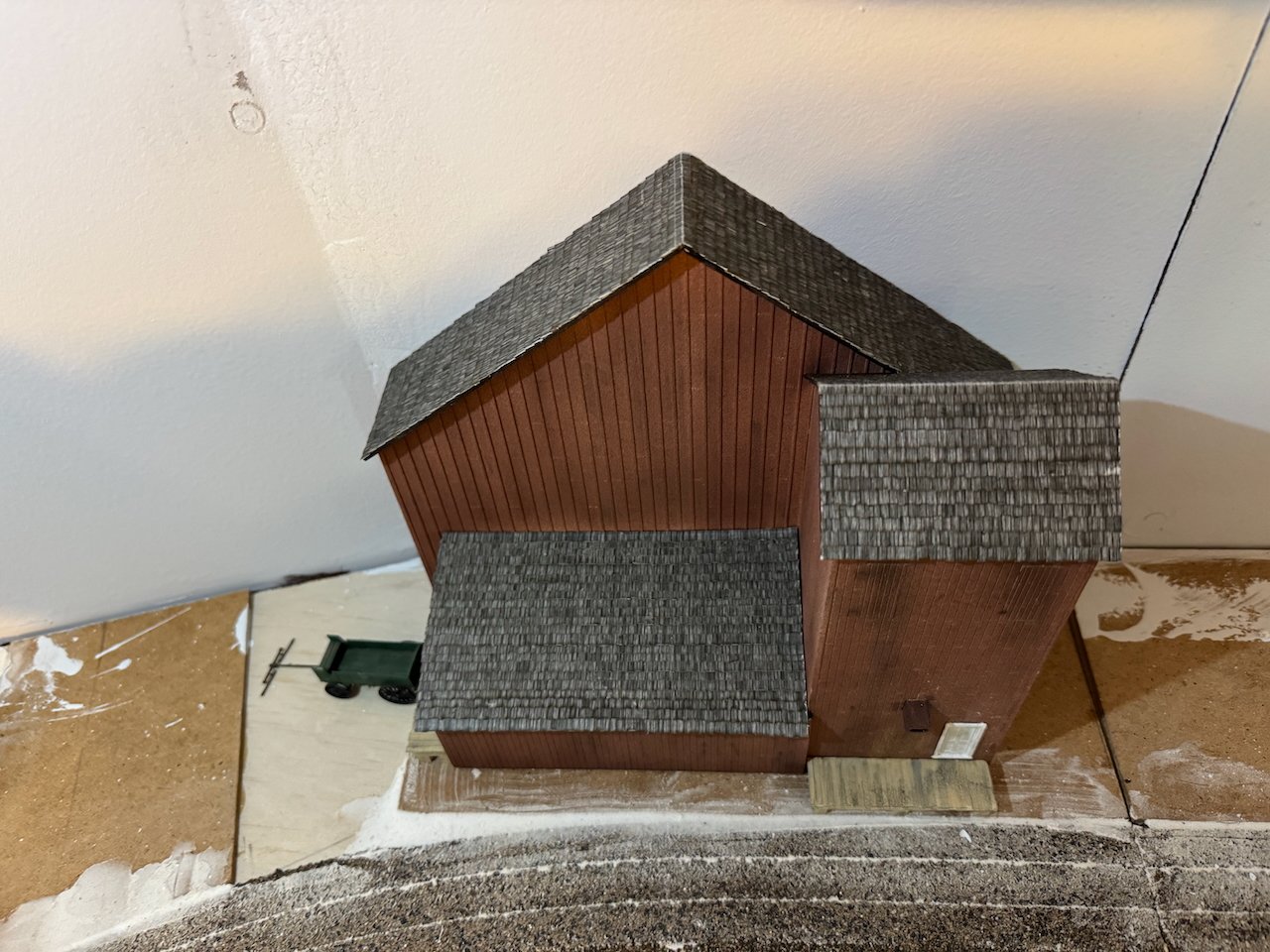-
Posts
3,530 -
Joined
-
Last visited
Content Type
Profiles
Forums
Gallery
Events
Everything posted by Cathead
-
Apparently my sense of humor is far too dry...I thought it was obvious that was satirical and utterly made-up. Oh well. The best jokes are always the ones you have to explain.
- 56 replies
-
- Lindberg
- sternwheeler
-
(and 1 more)
Tagged with:
-
Actually, it was tradition for riverboat builders to carve "616" in the base of one skiff, as a tribute to the Grand Rapids, Michigan area where the steamboat skiff was first developed. Good on Lindberg for recognizing this little-known piece of American river history.
- 56 replies
-
- Lindberg
- sternwheeler
-
(and 1 more)
Tagged with:
-
I agree, this kit will turn out looking far more realistic to the casual eye than the absolutely toylike King of the Mississippi. The best kit by far remains the Model Shipways Chaperon, but that's one huge and I can understand why not so many people build it for that reason alone. Anyway, none of this discussion is or was meant to make you feel defensive about your kit choice; it was meant as just an honest discussion of steamboat design since you'd expressed interest in learning more about an unfamiliar topic. My apologies if any comments came off otherwise.
- 56 replies
-
- Lindberg
- sternwheeler
-
(and 1 more)
Tagged with:
-
Yeah, I was only referring to common practice on American riverboats. Obviously, for example, railroad locomotives were set up the way this kit is. My understanding is that steamboat fireboxes were normally placed at the front at least in part to allow for the extra draft needed to keep their very tall chimneys drawing. Ironically, this kit has especially short chimneys, making that less of an issue. And yes, in most steamboat boilers the fire tubes ran through the whole boiler to provide even heating. This was one reason it was very important to keep sufficient water in the boiler; quite a few boiler explosions happened when the steamboat's engineer let the water get too low, letting the firetubes get extra hot, causing an explosion when cold water came into contact with those tubes (either through refilling too late, or the vessel rocking from side to side). Ferrus, see what happens when you let steamboat nerds into your build?
- 56 replies
-
- Lindberg
- sternwheeler
-
(and 1 more)
Tagged with:
-
Yeah, as I said, I couldn't see from previous photos how the kit had things arranged. The angle on the box-cover painting makes the solid front bulkhead look like a post, or at least I assumed that's what it was showing since that's what "should" be there. Given what you've said, you've got the coal dust in the right place, even though the kit's boiler/chimney arrangement is wacky. I certainly wasn't intending to imply that you should do a bunch of scratchbuilding, I get that the appeal here is a simple kit that will look good when finished. Carry on!
- 56 replies
-
- Lindberg
- sternwheeler
-
(and 1 more)
Tagged with:
-
For what it's worth, since you're interested in learning more about river vessels, the firebox would typically be in front of the boilers, not behind them. That's why the chimneys (the proper riverboat term for the smokestacks) are there; they're venting the smoke from the firebox. So the biggest coal mess should be in the area in front of the boilers. At least how's how the real thing would be; this kit seems to take various liberties with accuracy and I can't quite tell from your photos where it puts the firebox. Also, for reasons never fully defined, the deck with the boilers is the main deck, while the deck above the boilers is the boiler deck. Just how it is. Sailing vessels have their own bizarre vocabulary too!
- 56 replies
-
- Lindberg
- sternwheeler
-
(and 1 more)
Tagged with:
-
Nah, if he piloted on the Missouri River, nothing New York can throw will faze him.
- 732 replies
-
- Lula
- sternwheeler
-
(and 1 more)
Tagged with:
-
I could be wrong, but I don't think Missouri Pacific used track pans on this line. It was very much a secondary/local line for them and I can't think of why they would need to. But I should stop diverting your log into railroad stuff!
- 732 replies
-
- Lula
- sternwheeler
-
(and 1 more)
Tagged with:
-
Awesome observation, I completely missed the pipes sitting there. I bet you're right, and here's some fun context to support your contention. There IS a rail line right along the river bank where this is tied up, but it's not the MK&T line on the bridge in the background. It's a Missouri Pacific line running along the river (it passes under that bridge). Missouri River water is extremely sediment-rich (hence the common nickname Big Muddy), and there's no way you'd want to run river water directly into a steam engine's boiler. But the river is underlain by a deep layer of sand, so it makes perfect sense that they'd be drilling down maybe 20-50' into that sand to get access to shallow filtered water. Also, for anyone wondering why they're doing it just off the riverbank instead of on land, the river valley here is bounded by bedrock bluffs on both sides that rise a couple hundred feet above the river and dive down deep beneath it. So you don't have to go very far in from the river before you're quickly on shallow bedrock, whereas just off the bank you're on nice thick river sand. What I am curious about in this scenario is why they're just where they are. They appear to be well downstream of the town of Boonville (that bridge is on its northern side), where the Missouri Pacific had a depot. I don't think there would have been a water tower here. But maybe they were piping it back up to Boonville proper, since the actual riverfront near the depot was still a steamboat landing even in the early 1900s. Or maybe it's to provide water to some entity up on the bluffs (though if it was a drinking water well I think you'd put it upriver of Boonville, not downriver). That's more than enough digression, sorry! Fun stuff. 100% agree, if I get to the Boonville scene, that has to be included.
- 732 replies
-
- Lula
- sternwheeler
-
(and 1 more)
Tagged with:
-
Keith, forgive me for a slight digression, but I'm betting you'll enjoy this. I was re-visiting a local museum here in central Missouri the other day, and noticed an image I hadn't thought much about before, but the last time I saw it was before your pile-driver build. Here's a small pile driver on the Missouri River at Boonville in central Missouri, undated but I can tell from the bridge in the background that it's between the 1890s and 1930s. For those following both this log and my model railroad one, that background bridge is the same rail line I'm modeling and will show up in a different scene down the road. But regardless, I thought this was a fun little comparison and worth sharing. Forgive all the light reflections.
- 732 replies
-
- Lula
- sternwheeler
-
(and 1 more)
Tagged with:
-
Good question. For the club layout above, it was a combination of commercial rock molds and hand-molded, all using Scultamold brand plaster, which is my favorite medium for texture and workability. On the Rocheport scene it'll all be hand-sculpted. Mostly forming as I go with wet plaster, with some later touchup. I don't think I said this clearly, but the last scenery post caught us up to real-time on this project. Nothing's been done that you can't see in the images shown. So I'll definitely be covering my process once I get started on it! It'll be a few weeks because I have a few really busy weeks coming up with family visits and extra work commitments.
-
Yep, if you look back at the "context" shots from Rocheport, you'll see how complex the rock faces are there. Horizontal bedding, but shot through with layers of chert nodules and highly variable surfaces due to the karstic nature of the area. Also different geomorphology as you go up in the sequence from track level. It'll be a fun challenge. I also feel that the best scenery balances accuracy and realism. For example, some features can be accurate but "look" wrong to a viewer's eye, and my goal is for things to "look" right more than "be" right. A great example is lowing the height of the bluffs, even though that means I can't incorporate the entire stratigraphy there at scale. A 200' bluff in this scene would look toylike without the horizontal scale to match, no matter how accurate it is.
-
I agree, and now the bar is even higher with you following along! Here's a few hints, from scenery work I've been doing at a local model railroad club depicting this region as well (though not exactly the same locations). The photo quality isn't great but it's still some context. A core thing for me in making realistic rockwork is NOT to make a solid wall. Almost all real rock exposures, even those that have been blasted, have a lot of texture and variability. Rock faces are almost always broken up by scree slopes, soil-covered areas, etc. The above shot shows what I mean; to my eye this is far more realistic than a single slab of rock all the way along this scene. Here's a closer look at part of this face: This area is limestone as well, and though the color balance here is terrible, the rocks are washed with both grey and tan shades to capture the actual mix of weathered and fresh faces in this formation. Below is yet another bad photo of a local creek bed. I was really constrained on this one because the benchwork pattern was set for this before I joined the club, and I wouldn't have laid the creek out as a straight-sided slab, but I did what I could with it. Creeks are here are routinely lined by nearly horizontal beds of limestone, giving long linear runs of rock along the water, with coarse gravel bars separating pools. And here's a broader shot showing how even partial scenery work can come together: All of these scenes need vegetation, which will also help tie the scenes together AND further break up the rock work. But it's been good warmup work for my own project. The way my plaster shell has been laid out is far from random and I'll talk more in a different post about some of the specific choices I made in shaping those areas with reference to the real scenic setting.
-
As it turns out, Mrs. Cathead is fully on board with all my modeling endeavors, she shares my interests in history and transportation and enjoys going train-watching and towboat-watching with me. She'll probably get involved in the more detailed scenery work, if nothing else because she's also a geologist and has Opinions about getting the landscape right. She's also a botanist and will definitely be involved in selecting and harvesting the various natural scenic materials we'll be using later on. She loves the Katy Trail too (we rode the whole thing together) and very much approves the idea of having an operating piece of its living history in the back bedroom. She also used to be an active researcher on the Missouri River so everything about this whole corridor is a shared love for both of us.
-
Continuing the scenery, I began working on the more robust parts of the landscape by installing webs of cardboard strips shaped to roughly outline the terrain I wanted. This is a tried and true method that gives a lot of flexibility and uses easily scavenged material. It'll be hard to recognize in photos but, as a geologist, I put a lot of thought and planning into shaping this terrain to match the real landscape here. As stated before, Rocheport is bookended to the west by a high ridge that the railroad tunneled right through, and to the east by a long series of high bluffs parallel to the Missouri River, with the rail line sandwiched between rock and river. With the webbing done to my liking (including some adjustments), I began using plaster cloth to make a solid base layer. The old-school way to do this was to mix up your own plaster and dip paper towels in it, but this was always super-messy and hard to get amounts right. The more modern approach involves various products that embed a light paper roll with dry plaster, and all you have to do is dip it in water. Virtually no mess and a lot easier to do. You may have noticed the odd rectangular indentation in the bluff on the far right side of the scene. That's a specific local feature; the limestone in this region is pockmarked with karst features like caves, springs, etc. I'll be including some minor examples on the bluffs, but there was/is a larger cave-entrance overhang at the base of the bluffs right along the tracks. When this line was being built, the railroad walled in this opening to use as an explosives storage area. It remains today as a notable landmark along the modern rail trail, and I just had to include it. Here's what it looks like today: So that'll be a fun mini-scratchbuild! Next stage in the scenery is to start using plaster to really form the bedrock bluffs, river banks, and essentially seal in the landscape the way I want. This will take a while. Other notes: - I didn't really photograph the process, but you'll notice that the backdrops were installed. They're currently primed but I won't finish them until more foreground scenery is done. - You'll also notice that I installed the fascia boards that seal in the front of the layout. Like the backdrop, I won't paint these until more scenery is done. - The bluff on the left side, through which the tunnel runs, is pretty close to the actual scale height of the ridge there. It looks a bit "model railroad" if you don't realize it's exactly how the real thing is. - The bluffs on the right side, along the Missouri River, are less than half the scale height of the real thing (on the layout they're a scale 90-100' high, in real life they're 200-300'). They still look a bit abrupt because of the horizontal shortening I had to do, and one of the scenic challenges here was finding the balance between making this scenery dramatic enough to capture the feel of the real thing, but not so dramatic that it looks "fake". I wish I had four more feel of horizontal space to make a really nice run of bluffs, the real railroad parallels these towering features for miles, but this is the best I can do. Thanks for all the likes, comments, input, stories, etc.! I'm really looking forward to two things: getting some color on this scenery, and getting tracks laid so I can see some motion here! And I hope you'll enjoy getting there too. Soon I hope to write up some more background stuff to provide more context for the project. But I appreciate you all!
-
Jack, it's not clear from the photos and I didn't take any while assembling the benchwork, but it is a modified L-girder approach. The support frames are L-girders, on which the modules sit. I can always screw the modules down onto their support frames (though the L-girders) if desired, but it hasn't been necessary as they sit comfortably of their own accord and not screwing them in makes it easier to move them around as I continue work. But someday when I declare things "done" I'll probably drive a few holding screws in and then it becomes a really solid construction. Also, I've used homasote in the past but chose not to this time. Thanks for your perspectives!
-
Ian, great story, that's exactly why I'm taking this modular approach. I don't want to "ruin" this room and I don't want to have to throw everything out one day. This way a variety of outcomes are possible, from some or all of the scenes ending up in various local historical museums (of which we have several along this corridor), to possibly finding a new home with someone else. And if it does have to go to the landfill, it'll be a lot easier than ripping stuff off the walls and dismantling a messy web of permanent benchwork.
-
OK, let's try to catch up on the other work that's been done so far. I started trying to write up some deeper background about layout design, development, historical/geographic settings, etc. and it just got away from me, so for now we're going to focus on the more mundane physical details. The Rocheport scene is built on two modules, each 5.5' long for a total length of 11'. The depth of scene (to the backdrop) is about 2' on both, though the left-hand one curves outward to accommodate a possible future curve back around the other way, and also to add more scenic interest. One rule of thumb in model railroad planning is not to lay everything too straight; subtle changes in direction add visual interest. Here's an early view of the benchwork showing how each module is its own unit, set on top of separate support structures. They're bolted together in the middle and I can take either one off its supports independently if I want to work on it in a different setting or at a different angle (such as tilted onto its side for track wiring beneath the surface or taken outside for messy painting). If you're wondering about the wood color, most of it is Eastern Red Cedar that I cut and milled on my rural Missouri homestead farm. That'll be a theme in this project, using as much local/natural material as I can, especially for scenery. The backdrop supports are cheap pine 1x3s that I had sitting around from a long-ago project; I'm using them to use them up because they're perfect for this. The darker wood like the legs is also cedar, just older and weathered; those are reused pieces from an old chicken coop I built years ago and no longer need. The benchwork is solid framed boxes, with the actual surface being plywood supported on risers. This allows for two things: (1) scenery below track level like rivers and (2) easier access for wiring later. Here are a couple early views of transferring my computer-drawn track plan onto cheap plywood sheets (which I reused from a shipping crate rather than buying new). The joint between the two modules is just to the left of the depot. As the photos suggest, I did 95% of the woodworking down in my garage woodshop (and some outdoors when winter weather allowed). This is one of many benefits of the modular system; I can build these where all my tools are and then transport them upstairs to a more finished room, rather than turning a finished room into a construction zone for months. Once I had the exact track routes laid out, I made patterns and cut new pieces from high-end plywood to support the actual trackbed and core town areas. This ensures that the important surfaces are smooth and flat, but saves money from making everything out of good plywood. The cheap plywood remains as the base for things like rivers and other scenic areas that don't need to be perfect. Below are a few more views showing how these surfaces interact and how the risers aid in setting up scenery. Another reason to do it this way is that I can alter the level of the crappy plywood to create subtle changes in land surface even for areas I want mostly flat. If you look closely at the preceding and following photos you'll see that the crappy plywood doesn't quite line up with the flat high-end roadbed. There's a long, subtle climb in the surrounding "land" surface from below track level at the right end (near the depot) to above track level at the left end (near the bridge). This fits the actual landscape through Rocheport, where the track is a bit elevated over the surrounding floodplain at the town's east end, but goes through a shallow (but noticeable) cut as it approaches the bridge/tunnel combination at the west end. The "level" point where they're both even falls where a road crosses all the tracks, just visible at the left-hand side of one of the photos. These kind of details help keep a model railroad from looking like it's laid on a plywood tabletop. Even the flattest of landscapes, like the river floodplain this setting is, have local variations. The last photo also shows my scratchbuilt bridge abutments (good plywood airbrushed and weathered) and initial framing for the tunnel. The scene is set up so the tunnel provides a natural transition through the backdrop. Lots of railroads don't have tunnels so conveniently placed, but this one does! This has gotten long so I'll stop there. In a future post I'll show how I started developing the more complex landscape surfaces such as the riverbanks and the hills/bluffs rising above the tracks. Thanks for your patience as I catch up to real-time on this!
-
You sound like certain members of my family if you replace "boiler deck" with "floor"... Everything looks great!
- 732 replies
-
- Lula
- sternwheeler
-
(and 1 more)
Tagged with:
-
Might as well call it the boiler deck, following standard practice for steamboats, despite the nonsensicalness of calling the deck above the boiler, the boiler deck. Not sure if that nomenclature carried over into pseudo-marine harbor vessels like you're modeling here, but since your prototype is a riverboat, you can justify it. Otherwise looks great to me!
- 732 replies
-
- Lula
- sternwheeler
-
(and 1 more)
Tagged with:
-
I love the idea of having a few cats scattered around, I'll definitely follow up on that long-term! Thanks! I'm excited to blend it into the scene with proper scenery. I finished the roofing today. Here are a couple more in-progress shots of the hay barn roof, showing the complicated angle where it meets the elevator roof, and a peek at the interior bracing. And here are some shots of the finished building in place against the backdrop: And a couple paired photos with the originals: I'll do a little more weathering and add a few more details. I also need to build the ramp up to the hay barn, or as much of it shows in front of the backdrop. But the main structure is done and I think I'll switch gears to something else for a bit. For a change of pace, I'll start catching you all up on the scenery work that's been done so far, and maybe delve into some of the background planning. Thanks for reading!
About us
Modelshipworld - Advancing Ship Modeling through Research
SSL Secured
Your security is important for us so this Website is SSL-Secured
NRG Mailing Address
Nautical Research Guild
237 South Lincoln Street
Westmont IL, 60559-1917
Model Ship World ® and the MSW logo are Registered Trademarks, and belong to the Nautical Research Guild (United States Patent and Trademark Office: No. 6,929,264 & No. 6,929,274, registered Dec. 20, 2022)
Helpful Links
About the NRG
If you enjoy building ship models that are historically accurate as well as beautiful, then The Nautical Research Guild (NRG) is just right for you.
The Guild is a non-profit educational organization whose mission is to “Advance Ship Modeling Through Research”. We provide support to our members in their efforts to raise the quality of their model ships.
The Nautical Research Guild has published our world-renowned quarterly magazine, The Nautical Research Journal, since 1955. The pages of the Journal are full of articles by accomplished ship modelers who show you how they create those exquisite details on their models, and by maritime historians who show you the correct details to build. The Journal is available in both print and digital editions. Go to the NRG web site (www.thenrg.org) to download a complimentary digital copy of the Journal. The NRG also publishes plan sets, books and compilations of back issues of the Journal and the former Ships in Scale and Model Ship Builder magazines.






